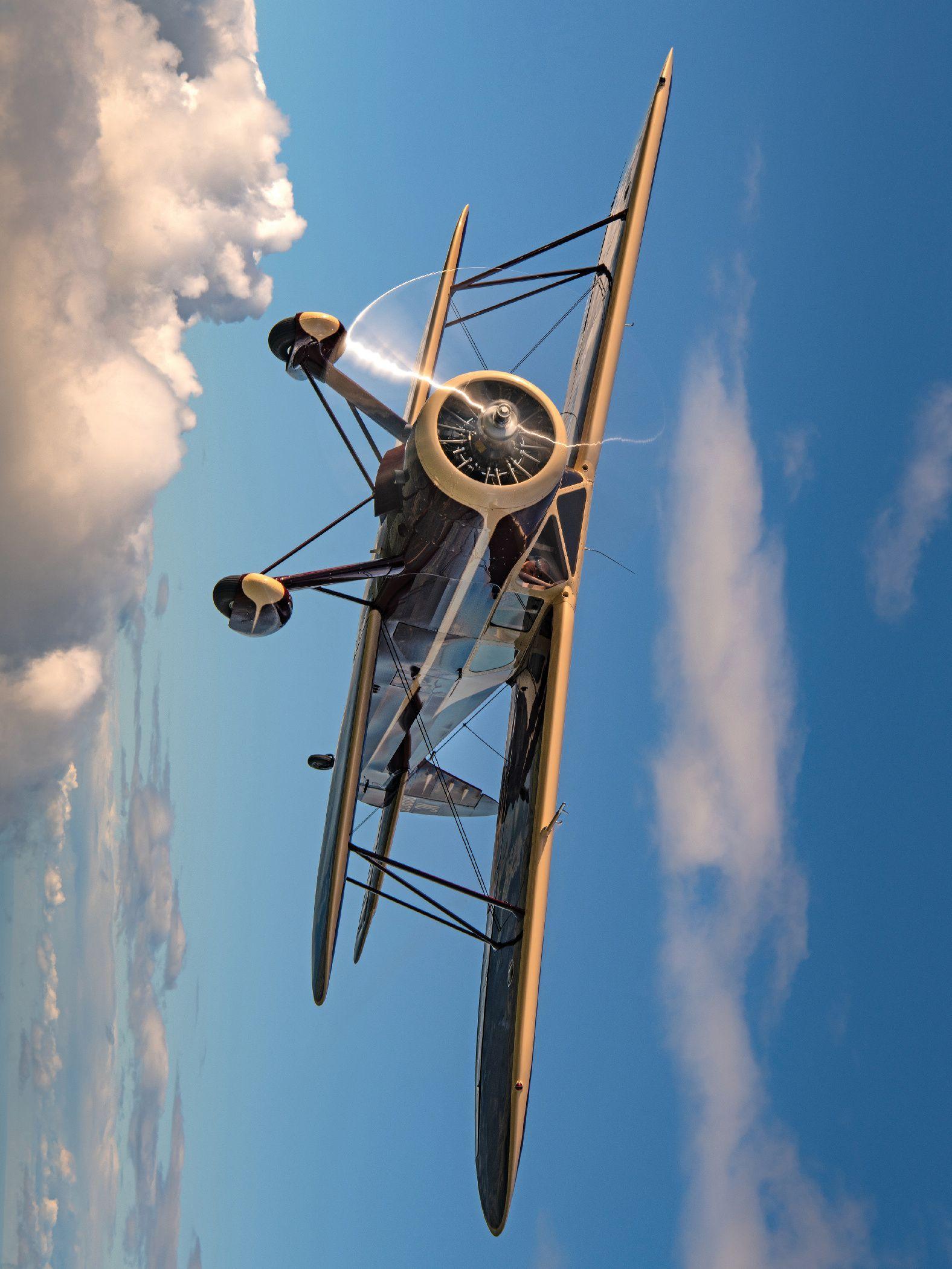STEARMAN KAYDET AWARD-WINNING RESTORATION





AS I MENTIONED IN MY LAST COLUMN, one of the milestone anniversaries the Vintage Aircraft Association will be celebrating at EAA AirVenture Oshkosh 2023 is the 90-year anniversary of the emergence of the aircraft engine that changed the face of aviation in the United States: the mighty little Continental A40.
This small, lightweight (relatively speaking!), and practical (by the engine design standards of that era) engine is still in use in some form, as it was the basic design/ancestor of the reciprocal engines in today’s modern aircraft. Through its use on smaller, less costly, and newly designed aircraft, it brought the dream of flight to individuals of average means who previously could only watch and wish from afar. It spawned new industries or expanded existing aviation-related businesses in the United States. Flight schools and aircraft dealerships were popping up everywhere. Manufacturing facilities for engine components like carburetors, magnetos, and propellers were built. Many of these newly minted pilots who earned their instructor certificates in A40-powered airplanes like the Taylor E-2 and J-2 Cub went on to play an important and critical role in World War II, initially serving as flight instructors in the Civilian Pilot Training Program when the United States was desperately looking for qualified instructors to train pilots for the war effort. I think it would be a fair statement to say that we may never fully know or understand the far-reaching impact the A40 engine played in the development of aviation in the United States or to what degree it assisted the United States in preparing for WWII.
As the decades passed, the original basic design of the A40 engine remained, but it has been refined to what we see in today’s modern aircraft. It is safe to say that the greatest percentage of airplanes flying to AirVenture 2023 this July will be powered by a descendent of the Continental A40.
One exception to this will include the dozen or more actual A40-powered aircraft that are scheduled to arrive in the Vintage area early on the Friday morning before the start of the convention. Slated to arrive at Wittman field are five Taylor E-2 Cubs, seven Taylor J-2 Cubs, two Heath Parasols, and one Taylorcraft Model A. Working behind the scenes on these arrivals has been an interesting experience, since these airplanes saunter along at a leisurely 55 mph, or about 48 mph below the Oshkosh Notice’s stated speed of 90 knots (103-plus mph!). All but one will be arriving NORDO (no radio). This event promises to be really captivating with one of the airplanes flying with a single-bladed Everel propeller.
CONTINUED ON PAGE 64
May/June 2023
STAFF
Publisher: Jack J Pelton, EAA CEO and Chairman of the Board
Vice President of Publications, Marketing, Membership
and Retail/Editor: Jim Busha / jbusha@eaa org
Senior Copy Editor: Colleen Walsh
Copy Editors: Tom Breuer, Jennifer Knaack
Proofreader: Tara Bann
Print Production Team Lead: Marie Rayome-Gill
Advertising Manager: Sue Anderson / sanderson@eaa.org

Mailing Address: VAA, PO Box 3086, Oshkosh, WI 54903
Website: EAAVintage org
Email: vintageaircraft@eaa org
Phone: 800-564-6322
Visit EAAVintage org for the latest in information and news
Current EAA members may join the Vintage Aircraft Association and receive Vintage Airplane magazine for an additional $45/year
EAA membership, Vintage Airplane magazine, and one-year membership in the EAA Vintage Aircraft Association are available for $55 per year (Sport Aviation magazine not included). (Add $7 for International Postage.)
Foreign Memberships
Please submit your remittance with a check or draft drawn on a United States bank payable in United States dollars Add required foreign postage amount for each membership
Membership Service
P O Box 3086, Oshkosh, WI 54903-3086
Monday–Friday, 8 AM 6 PM CST
Join/Renew 800-564-6322
membership@eaa.org
EAA AirVenture Oshkosh
www EAA org/AirVenture 888-322-4636
Through its use on smaller, less costly, and newly designed aircraft, it brought the dream of flight to individuals of average means who previously could only watch and wish from afar.

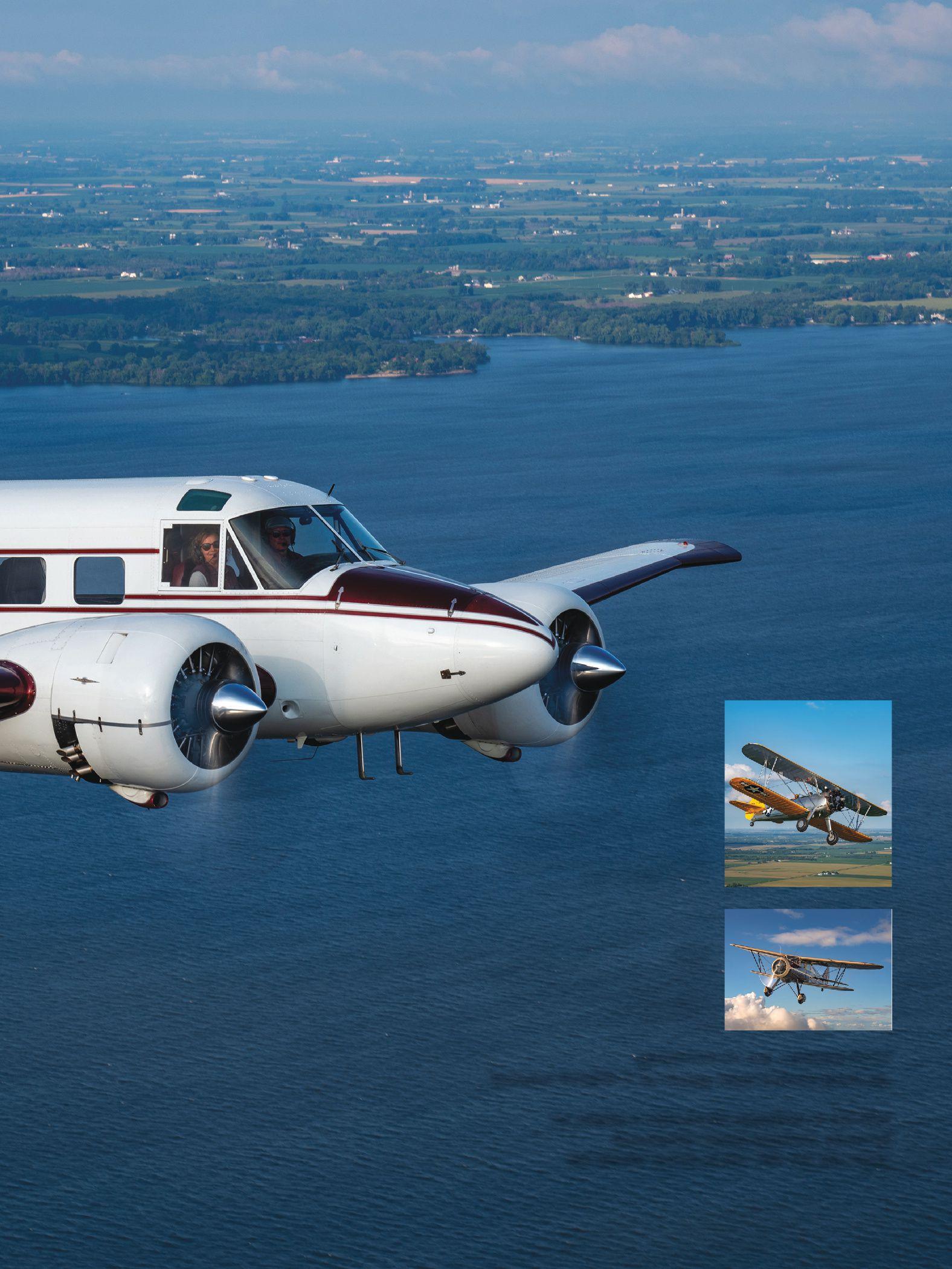
Nominate your favorite vintage aviator for the EAA Vintage Aircraft Association Hall of Fame A great honor could be bestowed upon that man or woman working next to you on your airplane, sitting next to you in the chapter meeting, or walking next to you at EAA AirVenture Oshkosh. Think about the people in your circle of aviation friends: the mechanic, historian, photographer, or pilot who has shared innumerable tips with you and with many others. They could be the next VAA Hall of Fame inductee — but only if they are nominated.
The person you nominate can be a citizen of any country and may be living or deceased; his or her involvement in vintage aviation must have occurred
between 1950 and the present day. His or her contribution can be in the areas of flying, design, mechanical or aerodynamic developments, administration, writing, some other vital and relevant field, or any combination of fields that support aviation. The person you nominate must be or have been a member of the Vintage Aircraft Association or the Antique/Classic Division of EAA, and preference is given to those whose actions have contributed to the VAA in some way, perhaps as a volunteer, a restorer who shares his expertise with others, a writer, a photographer, or a pilot sharing stories, preserving aviation history, and encouraging new pilots and enthusiasts.
To nominate someone is easy. It just takes a little time and a little reminiscing on your part.
• Think of a person; think of his or her contributions to vintage aviation.
• Write those contributions in the various categories of the nomination form.
• Write a simple letter highlighting these attributes and contributions. Make copies of newspaper or magazine articles that may substantiate your view.
• If at all possible, have another individual (or more) complete a form or write a letter about this person, confirming why the person is a good candidate for induction.
We would like to take this opportunity to mention that if you have nominated someone for the VAA Hall of Fame, nominations for the honor are kept on file for three years, after which the nomination must be resubmitted. Mail nominating materials to: VAA Hall of Fame, c/o Amy Lemke VAA PO Box 3086 Oshkosh, WI 54903
Email: alemke@eaa.org
Find the nomination form at EAAVintage.org, or call the VAA office for a copy (920-426-6110), or on your own sheet of paper, simply include the following information:
• Date submitted.
• Name of person nominated.
• Address and phone number of nominee.
• Email address of nominee.
• Date of birth of nominee. If deceased, date of death.
• Name and relationship of nominee’s closest living relative.
• Address and phone of nominee’s closest living relative.
• VAA and EAA number, if known. (Nominee must have been or is a VAA member.)
• Time span (dates) of the nominee’s contributions to vintage aviation. (Must be between 1950 to present day.)
• Area(s) of contributions to aviation.
• Describe the event(s) or nature of activities the nominee has undertaken in aviation to be worthy of induction into the VAA Hall of Fame.
• Describe achievements the nominee has made in other related fields in aviation.
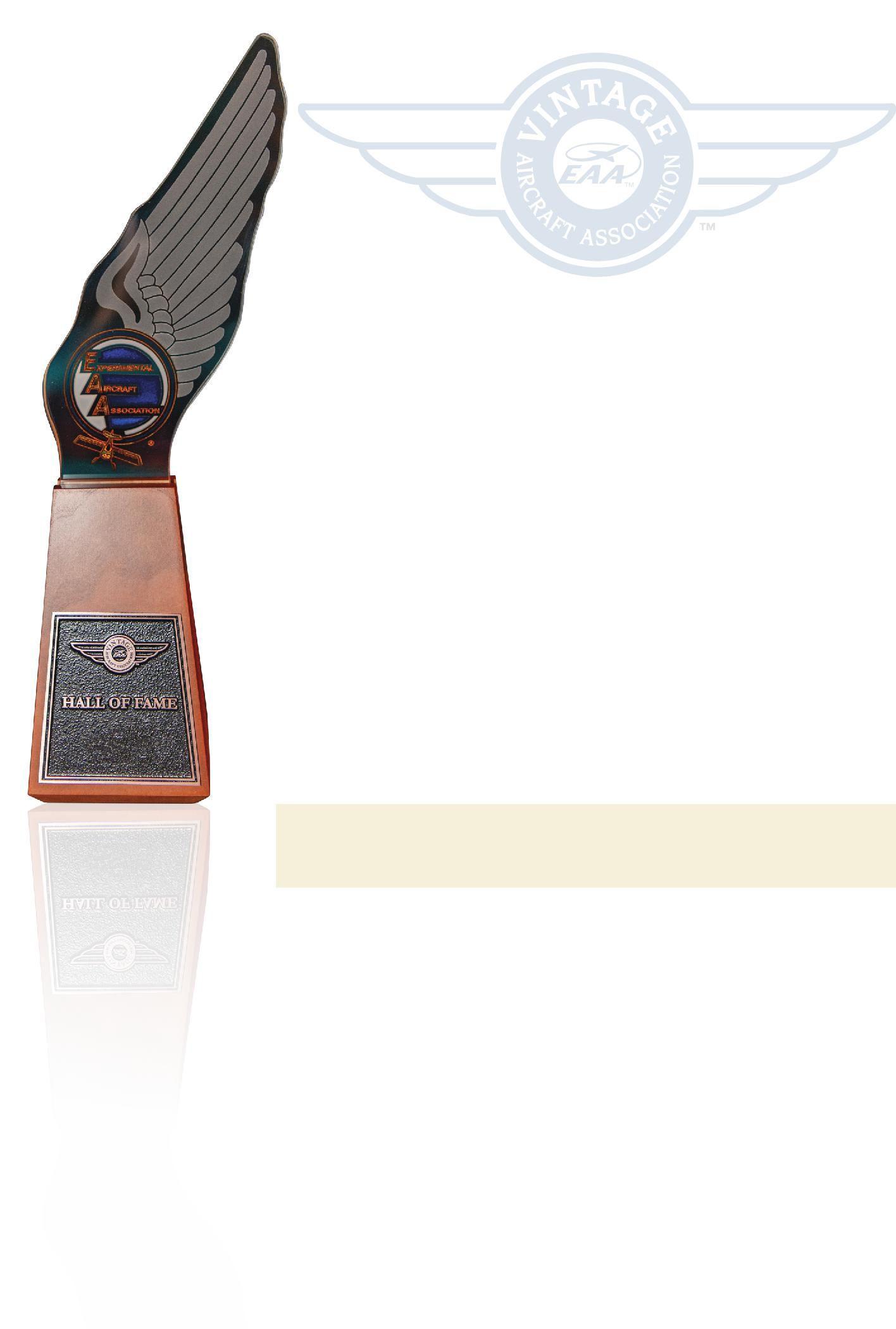
• Has the nominee already been honored for his or her involvement in aviation and/or the contribution you are stating in this petition? If yes, please explain the nature of the honor and/or award the nominee has received.
• Any additional supporting information.
• Submitter’s address and phone number, plus email address.
• Include any supporting material with your petition.
For one week every year a temporary city of about 50,000 people is created in Oshkosh, Wisconsin, on the grounds of Wittman Regional Airport. We call the temporary city EAA AirVenture Oshkosh. During this one week, EAA and our communities, including the Vintage Aircraft Association, host more than 600,000 pilots and aviation enthusiasts along with their families and friends.
As a dedicated member of the Vintage Aircraft Association, you most certainly understand the impact of the programs supported by Vintage and hosted at Vintage Village and along the Vintage flightline during EAA AirVenture Oshkosh every year. The Vintage flightline is 1.3 miles long and is annually filled with more than 1,100 magnificent vintage airplanes. At the very heart of the Vintage experience at AirVenture is Vintage Village and our flagship building, the Red Barn.
Vintage Village, and in particular the Red Barn, is a charming place at Wittman Regional Airport during AirVenture. It is a destination where friends old and new meet for those great times we are so familiar with in our close world of vintage aviation. It’s energizing and relaxing at the same time. It’s our own field of dreams!
The Vintage area is the fun place to be. There is no place like it at AirVenture. Where else could someone get such a close look at some of the most magnificent and rare vintage airplanes on Earth? That is just astounding when you think about it. It is on the Vintage flightline where you can admire the one and only remaining low-wing Stinson Tri-Motor, the only two restored and flying Howard 500s, and one of the few airworthy Stinson SR-5s in existence. And then there is the “fun and affordable” aircraft display, not only in front of the Red Barn but along the entire Vintage flightline. Fun and affordable says it all. That’s where you can get the greatest “bang for your buck” in our world of vintage airplanes!
For us to continue to support this wonderful place, we ask you to assist us with a financial contribution to the Friends of the Red Barn. For the Vintage Aircraft Association, this is the only major annual fundraiser and it is vital to keeping the Vintage field of dreams alive and vibrant. We cannot do it without your support.

Your personal contribution plays an indispensable and significant role in providing the best experience possible for every visitor to Vintage during AirVenture. Contribute online at EAAVintage.org. Or, you may make your check payable to the Friends of the Red Barn and mail to Friends of the Red Barn, PO Box 3086, Oshkosh, WI 54903-3086.
Be a Friend of the Red Barn this year! The Vintage Aircraft Association is a nonprofit 501(c)(3), so your contribution to this fund is tax deductible to the extent allowed by law.
Looking forward to a great AirVenture 2023!
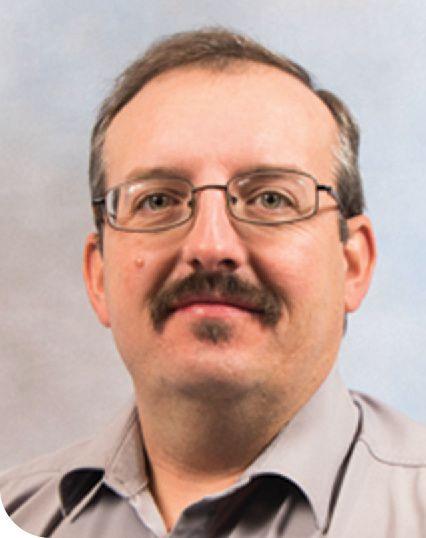
A PILOT OF 48 years, Dan grew up at a small grass airport in Lodi, Wisconsin. As soon as he was tall enough to reach the rudder pedals, he learned to fly in a J-3 Cub and soloed at age 16.
Along with his father, Richard Knutson, Dan was involved in the restoration of many vintage airplanes. He has attended every EAA convention since 1966 and became the EAA Contemporary judging chairman in 1992 when the category was formed.

For 47 years, Dan has worked in the automotive industry. He and his wife, Mary, who is chairman of the Red Barn Store, live in Lodi.
PAUL’S INSPIRATION IN FLIGHT came from his grandfather and father, who took him to his first Oshkosh convention in 1983. During the late 1980s, he helped his grandfather build a Sonerai II. While in college, he started taking flight lessons in his father’s 1959 Cessna 150. He graduated from Concordia University in Wisconsin with a degree in accounting and acquired his CPA license in 2011. He currently resides in Mason, Ohio, with his wife, Stephanie, and their young sons, Ethan and Allon.
Paul has volunteered in numerous positions for Vintage, starting with the Antique Classic division during the 1989 Oshkosh convention, where he worked the flightline. In the mid-1990s he started volunteering during the work weekends at Tall Pines Café and as chair of Aeromart. While he still helps out during the work weekends, Paul’s main responsibility is now as Vintage finance chairman during AirVenture.
GEORGE’S LOVE FOR AVIATION started at age 12 when he attended his first air show at his hometown airport in Hartford, Wisconsin. He realized then that he wanted to make flying a large part of his life. He started flying in 1969 and earned his private ticket in 1970.
In 1974, George was hired as a co-pilot, flying Beech 18s for a Milwaukee-based charter company. His job duties also included managing the Hartford airport on weekends. During that period, he was able to check out in many different types of Antique and Classic aircraft, including a Cub, Stearman, Great Lakes, and Luscombe, to name a few.
Having retired after 25 years of corporate flying, George now spends his time as program manager for the EAA B-17 tour and as a pilot on EAA’s Ford Tri-Motor. Since 1983, he served the VAA during the Oshkosh convention as a volunteer for and chair of VAA parking and flightline safety, and today as vice chairman of Vintage field operations. In the past, George has also served the VAA as vice president.
JOHN’S INTEREST IN AVIATION was handed down from his father. He grew up with plastic models, advancing to radio control and then culminating in his private pilot certificate in 1982. He attended his first Oshkosh convention in 1978, joined EAA in 1982, and became a VAA member in 1988. In 1990, John moved from Minnesota to Indiana and became involved with EAA Chapter 226 in Anderson, where he eventually served as secretary and president.
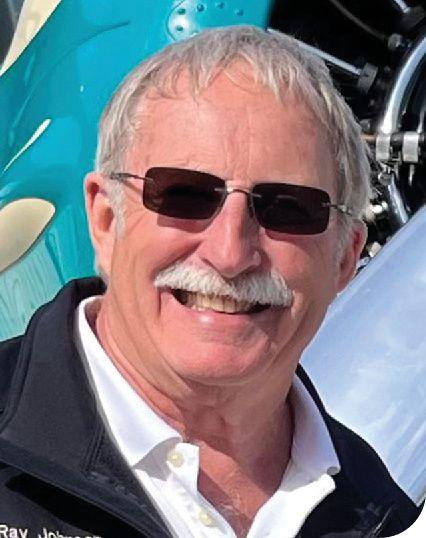
While in Indiana, John received his A&P certificate (with inspection authorization in 2016) and worked in technical publications at Rolls-Royce. While working for Ken Cook Co. in Milwaukee, he also wrote marketing and technical materials for Beechcraft and was privileged to help edit Duane Cole’s final book.
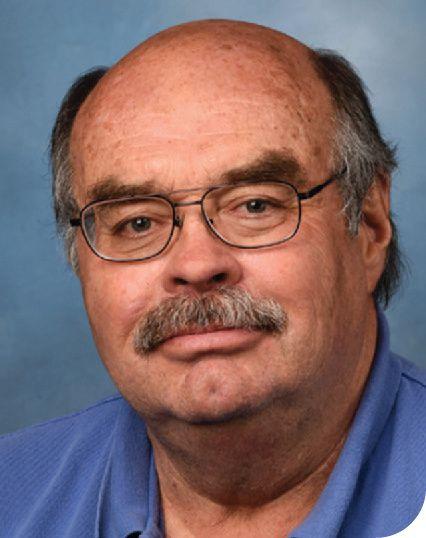

John is vice president of IT with The Rees Group Inc. in Madison, Wisconsin. He’s the past treasurer of the Midwest Antique Airplane Club, as well as the current editor and publisher of Cub Clues, a newsletter of the Piper Cub Club, and the Taylorcraft Owners Club newsletter. John has restored several aircraft and currently owns and flies a Piper J-3 Cub and a 1932 Great Lakes Sport Trainer.
RAY GREW UP ON a farm near Marion, Indiana, and has had a lifelong interest in old airplanes, having an uncle who took him for his first ride in an Aeronca Defender. He received his private pilot certificate in 1980, and that same year he joined EAA and the Vintage Aircraft Association. He was honored with a Bronze Lindy in 1995, and then in 1996 received Grand Champion Classic Aircraft for his 1947 Aeronca Chief (11AC). Ray also owns and enjoys flying his 1963 Mooney M20C.
Ray has attended every Oshkosh convention since 1980. In 1991, he started the Fly/In Cruise/In, held annually in Marion, Indiana, with this year being the 32nd consecutive Fly/In held there. This will be his 13th year serving as chairman of and conducting the daily Vintage in Review program at Vintage Interview Circle. Ray retired from American Electric Power after 42 years of service.
EARL’S LOVE OF FLYING came from his parents, who often took their children to airport fences to watch the airplanes. At the urging of his father, he took up flying at the Stick & Rudder Club at Waukegan airport (KUGN) and passed his private checkride in 1974.
Earl served as a board member of Stick & Rudder and later as its assistant treasurer, treasurer, and president. His first visit to the Oshkosh convention was for one day in 1981. He began volunteering on the Vintage flightline the following year and joined Vintage in 1987.
Earl has had many Vintage jobs over the years, including tracking volunteer hours, producing the Daily Aerogram, and producing volunteer name tags. He was appointed as an advisor to the board in 2015.
He serves as Vintage computer ops chairman during AirVenture, and designed and launched the Vintage website in 2013.

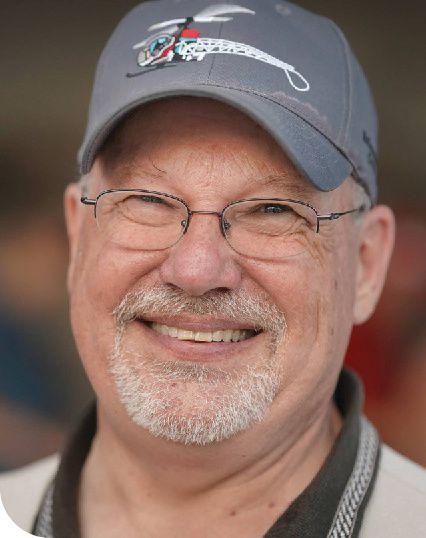
JOE GREW UP ON a cranberry farm in central Wisconsin. Several neighbors had light aircraft and some had airstrips on their property, so it was always easy to be around airplanes and airplane people. A close friend of the family was ag pilot Jim Miles (EAA 158), who introduced Joe to EAA by taking him to Oshkosh for the EAA convention in 1970, where they camped under the wing of Jim’s Piper PA-12 Super Cruiser. Joe joined EAA in 1976 and became a Lifetime member in 2002. He also is a Lifetime member of VAA (VAA 5982).
Joe earned his private pilot certificate in 1978 and bought his first airplane in 1979 — a 1955 Piper Tri-Pacer. He flew it for about a year and then converted it to a PA-20 Pacer (tailwheel) configuration. He holds commercial pilot and flight instructor certificates with airplane and helicopter ratings, as well an A&P mechanic certificate with IA. Joe is also a designated airworthiness representative for experimental aircraft.
Joe has owned a number of vintage aircraft over the years, including a Waco UPF-7, a Cessna 180, and a Piper J-5 Cub Cruiser. He currently owns and flies a 1960 Piper PA-18 Super Cub.

CHARLIE’S INVOLVEMENT IN AVIATION began at age 14 with a Young Eagles flight at the DeKalb County Airport (KGWB). Along with his father and younger brother, he started to get more involved with his local VAA chapter, and in 2010 he attended his first AirVenture where he found a passion for volunteering. He has since taken on the role of Vintage Hangar Events chairman, and currently serves on the VAA board of directors. During the summer of 2014, Charlie obtained his private pilot certificate, and in 2015, he was honored in the EAA Young Eagles Yearbook.
Charlie earned a Bachelor of Science degree in aeronautical and astronautical engineering at Purdue University and a Master of Science degree in aerospace engineering from the University of Dayton. He is currently employed by the United States Air Force as a flight technology engineer at Wright-Patterson Air Force Base. Charlie is also an Eagle Scout, loves the outdoors, and enjoys running in his free time. He’s currently pursuing his tailwheel endorsement and hopes to own a vintage aircraft someday.
KATHY WAS INTRODUCED TO aviation when she was 3. Years later, she had her first ride in a Cessna 170, inspiring her lifelong passion for flying and vintage aircraft. Soon after, she purchased her own 1960 Cessna 150, which she flew to obtain her private pilot certificate.
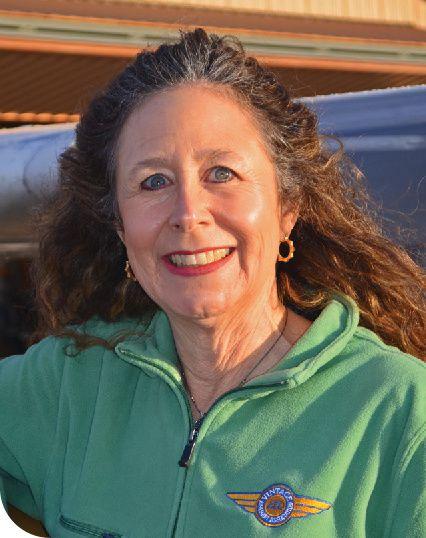
Kathy flew her C-150 to her first EAA convention in 1997, flying along with friends in a C-170 and a J-3 Cub. Camping in the Antique/Classic area, Kathy was parking airplanes the second day and has volunteered with Vintage every year since. Kathy became a co-chairman of the Vintage Flightline and works closely with Vintage and all other parking and leadership entities on the field every year to ensure safe and smooth operations throughout AirVenture.
After attending board meetings during her time as chairman, Kathy was appointed as an advisor to the VAA board. Through the advisor position, with input from flightline chairmen, several key initiatives have been presented to the VAA board to improve flightline safety and membership parking during convention.
While managing her career, she completed her instrument rating and made many cross-country trips to Oshkosh, most recently with two other female pilots in her Navion L-17. She is working on her tailwheel endorsement in a recently acquired Piper PA-11. Kathy and her husband’s love of flying has led to many adventures in their airplane.
Kathy still serves as vice chairman of Vintage Parking and Safety. Her passion for aviation has led to volunteer opportunities in the Denver area, at the Udvar-Hazy Smithsonian Museum, and in flying missions with her husband for Pilots N Paws. Kathy credits her love of aviation to the many Antique/Classic and Vintage members who came before her and strives to continue carrying this message to the next generation.
 BY ROBERT G. LOCK
BY ROBERT G. LOCK
WHENEVER ONE BONDS ANY substrate in an aircraft application it is a very good idea to make a test sample to be sure of an airworthy joint. There are times when I mix a small batch of adhesive and bond two pieces of spruce, plywood, or aluminum together just to test my expertise before actually completing the job. The first discussion will be wood structures — both soft and hard wood.
To make a test sample of spruce, cut two or more sections that measure about 2-by-6 inches and are 3/4-inch thick. Prepare the bonding
Allow the bond to cure under correct temperature and time, then remove clamps and put into a vise, place a parallel or C-clamp onto the opposite end from the vise and twist, push, and pull until it breaks. Then inspect the bond line for evidence of wood fibers in the adhesive. The wood should break before the bond does.
surfaces, mix the adhesive, and assemble the two pieces. For synthetic resin adhesive (Resorcinol) AC 43.13-1B recommends a pressing force of 150 psi; in other words use a good bit of pressure. The purpose of pressure is to force the adhesive into the wood grain, thus ensuring an airworthy bond. Above is a sketch of how a good bond line would appear if you could dissect it. The Army Air Forces called this the “dowel pin action.” Since the adhesive penetrates into the wood grain, sanding of spar splices is avoided because sand particles will enter grain structure, causing a possible poor joint. A spar splice should always be planed smooth and to an exact fit.
Bonding with epoxy adhesive is different than bonding with synthetic resin glue. Synthetic resins gain strength from a thin bond line, while epoxy adhesive doesn’t like real thin bond lines. And the clamping pressure is different — clamping pressure of 150 psi will drive all the adhesive out of the joint, and a weak part will be the result. I don’t use epoxy adhesive to bond spar splices because of this clamping problem. On rib repairs I use spring clamps because they provide a positive pressure on the joint until it cures. If you use epoxy adhesive in a spar splice and clamp it with parallel or C-clamps, the pressure will drive some of the adhesive out of the joint, and when you come back later the clamps will be loose. I will continue to make spar splices using synthetic resin glue, but the number of spar splices in my future are very few if none at all.
Bonding of hardwood is quite different. When I speak of hardwood I am referring to plywood — either mahogany or birch, which are common types used in aircraft structure.
First, when possible, plywood should be bonded on the B side (the side that is the roughest) to promote good adhesion. When using birch plywood it is a good idea to provide some sand scratches in the areas to be bonded — just
rough up the surface with some 180 or 240 grit sandpaper without removing surface material. You can make the same type of test sample as shown in Figure 1 by gluing plywood to a spruce block of the same dimensions. After it cures, try to peel the plywood from the spruce block. Once again the bond line should not fail. Or you can bond two pieces of aircraft plywood strips measuring 2-by-4 inches, overlapping at least 2 inches. Allow to cure, then try to break the sample. Upon breaking each of the wood samples, closely inspect the bond line. If there are wood fibers in the bond line, it’s good. If the sample failed down the bond line, then it’s not good. You can create various types of test samples. For instance, if you are gluing gussets to spruce cap strips, begin by making a couple test samples. Apply glue just as you would when building a rib, using nails to apply pressure. Allow the sample to cure, and then pull it apart to check the bond line. This will most always ensure one that a good airworthy bond has been produced. When making repairs or fabricating a new structure, mix enough adhesive to do the job plus some extra to make test samples. Clamp and cure with the structure, then break to destruction to check for airworthiness.
As we head toward spring, bet there’s a growing list of tasks to ready your aircraft. We’ve got you covered, but first things first, starting with a FULL
plane inspection. While mechanical inspection and any needed repair should be left to an aviation technical specialist, there are many tasks to do right from your hangar to prep your aircraft for the warm spring and summer months! Check wheel wells for nests, e.g. birds, rodents, or other debris. Identify heavy oxidation on moveable control surfaces like elevators, rudder, and ailerons. Note stains from oil and hydraulic leaks on the engine cowling and landing gear.
When cleaning a painted aircraft exterior, oxidation removal, UV protection, and enhanced color are the main goals. NUVITE’s NuPower II®, a drywash that removes all types of soils, and NuPol®, for heavier oxidation,
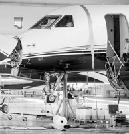
deliver on all counts. For a fast wipe-down and extra-high gloss, keep CitriCut® Xtra in your arsenal. NuShine® II metal polishing system is your go-to for that showroom shine on bare metal. If a mirror-finish is not desired, a quick wipe down with NuImage, Cleaner & Debugger, will do. It’s also great for in-between polishing!
On the interior, ALL clutter (flashlights, pens, papers, etc.) must be removed. Next is a thorough vacuuming: bins, seats, and carpet. Clean seats, vinyl, faux or genuine leather, with C-49® All Purpose Cleaner; follow with Leather Guard for deep conditioning. Carpet can be treated with NUVITE’s PCS Stain Remover & Shampoo. Wood finishes benefit from Regard’s cleaning and conditioning properties.
Don’t overlook your cargo/luggage areas, which can be easily cleaned with SS9-3 and C-49®

The Dark Side: Your Aircraft’s Underbelly
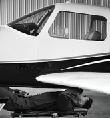
Cleaning the underbelly is usually saved for last so dripping from up-top cleaning doesn’t double the work. And face it,
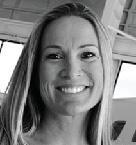
being underneath, cleaning soot, stains, and crusted residue is no picnic. Here’s the fix... In addition to a garage creeper, be sure to invest in an industrial strength, surface-cling degreaser like CitriCut® Gel. Roll right under that belly and count on exceptional overhead cleaning.
On your first full inspection, while noting all the essential tasks needed to ready your aircraft, it’s helpful to build a shopping list of the cleaning products and necessary equipment that will get the job done. Review product information fully, including directions for use and manufacturer’s recommendations. Contact the product manufacturer directly for unique applications. The more you know about the products you’re planning to use, the better the results.
To Order: 877.477.7823
Figure 2WHEN THE CONTINENTAL A-40 engine was introduced in 1931, it changed everything in general aviation. Few people know of the A-40 engine or the pivotal role it played. This little engine gave birth to general aviation as we know it today.

The 37-hp A-40 completely changed the cost of flying. It was now economical for flight schools to purchase, operate, and maintain these little engines. As the world’s first horizontally opposed four-cylinder engine, it launched a whole new engine design platform that is still in production today. The compact design of the A-40 also allowed aircraft designers to reduce the drag of the engine and streamline the entire aircraft to achieve 200 mph for a fourplace airplane.
Prior to the A-40, flight schools were few and far between because they were not profitable. Flying heavy and expensive radial-engine-powered airplanes was only for the rich, especially in the early 1930s and the Great Depression. The lightweight, low-cost A-40 engine, paired with the introduction of lightweight aircraft, changed all of that. Now, for the first time, flight schools could be profitable and the average person could not only afford flying lessons but also their own airplane. Piper issued a promotional poster for its Cubs in the summer of 1936 with the headline “Count the Cubs.” The claim of 10,000 student
pilots was probably an exaggeration, but it did emphasize the fact that flight schools were popping up all around the country and that they were profitable flying the A-40 engine, especially on Cubs.
Not only did the A-40 make flying affordable for the general public, but also it started a whole new engine design platform, the horizontally opposed four-cylinder engine. Think of the many hundreds of thousands of horizontally opposed four-cylinder engines that have been built over the past nine decades, and they all owe their start to the A-40. Manufacturers like Piper, Beech, Cessna, Aeronca, Mooney, and many more all used the flat four-cylinder horizontally opposed engines on their aircraft, from engine makers like Continental, Lycoming, Franklin, and Menasco. Whether fourcylinder, six-cylinder, or even the 400-hp, eight-cylinder horizontally opposed engine, the A-40 is the grandfather of them all.

A lightweight engine that could lift two people into the air was the longtime dream of many flyers and aircraft designers. After World War I and through the 1920s, the war surplus 90-hp Curtiss OX-5 engines powered many different airplanes. Although few in number, these engines had notorious reliability issues and high maintenance costs. The antiquated and heavy V-8 engine design was barely a suitable powerplant, even for large biplanes.
The radial engines of the late 1920s and early ’30s — built by Wright, Kinner, Warner, Continental, and Lycoming — were big, heavy, and expensive to buy and maintain. The options for a lightweight radial engine were limited to the threecylinder, 45-hp Szekely SR-3, or the 40-hp Aeromarine AR-3 engines. Both of these engines had terrible vibration characteristics and marginal reliability. Even the French nine-cylinder radial, the 50-hp Salmson engine, was complex and outrageously expensive.
A couple of inline engines were available: the 25-hp Heath-Henderson four-cylinder and the 20-hp Light Manufacturing Co.’s Tiger Kitten. The Tiger Kitten was an inverted two-cylinder design. However, neither of these engines could get two people airborne, and they achieved little success in the marketplace.

Aeronca Aircraft (the Aeronautical Corp. of America) had purchased the rights to the Poole-Galloway twocylinder engine in May 1929, which evolved into the Aeronca E-107. The design was a horizontally opposed, two-cylinder, four-cycle engine, which meant the propeller was only powered half the time. To have a continuous power stroke on a four-cycle engine, the engine must be designed with four cylinders. The little E-107 developed 26-29 hp and was used on the Aeronca C-2; about 170 C-2s were built.
Aeronca modified the design in 1930 with a bigger bore and overhead valves, and it became the 36-hp E-113 engine. The Aeronca C-3 and Aeronca K used this engine up through early 1938. Aeronca had decided early on not to sell its engines to any other aircraft manufacturers, and as a result the engine had limited success. Aeronca had manufactured about 1,000 of the E-series engine from 1929 until it was abandoned in 1938.


The lack of a lightweight engine powerful enough get two people airborne for flight instruction was an insurmountable obstacle in the aviation world. So, there were many airplanes in search of an engine. Enter Continental. The Continental Motor Co. started in 1902 manufacturing two- and four-cylinder engines for automakers. The engine business boomed, and by 1912 Continental was producing 35,000 automobile engines each year. By 1929, it sold more than 330,000 automobile engines!

At that point, Continental launched into the aviation market, with the introduction of a seven-cylinder radial engine, the A-70. Most people don’t know about the A-70 because it was not very successful. It only developed a pitiful 160 hp and was priced at $2,700. Later, this engine would go on to become the famous W670, powering many aircraft, most notably the Boeing Stearman PT-17. Sales of the A-70 in 1930 were dismal, and with the crash of the stock market, Continental was in serious financial trouble and was virtually bankrupt. That was the impetus to start the design of the lightweight and low-cost A-40 engine.
Introduced in May 1931 with approved type certificate No. 72, the A-40 was rated at 37 hp at 2550 rpm. The engine incorporated a horizontally opposed four-cylinder design with the flat-head technology of the day, known as the L-head, with the valves in the cylinder block. This is the same technology that the Ford Motor Co. used when Ford introduced the first V-8 flathead engine in 1932. To reduce the weight for an aircraft engine, the one-piece engine case was constructed from cast aluminum, and the heads, which spanned two cylinders, were also cast aluminum with large cooling fins. The crankshaft shafts were completely machined from a caststeel billet. The engine was equipped with a single Scintilla mag and a Stromberg NA-S2 carb, weighing just 147 pounds and priced at $400.
As with many new products, the A-40 suffered from a host of design issues. The most significant was the fracture of the crankshaft after just 100 hours in service. Additionally, the cooling fins on the cylinders were inadequate,
causing major overheating problems. Also, the head gasket would frequently fail and the exhaust valves would burn out. From May 1931 through August 1933, Continental only produced 98 engines, all of which were total failures and had to be replaced. The A-40 engine was reintroduced in August 1933 as the A-40-2, starting over with serial No. 300. It included a forged-steel crankshaft, more cylinder cooling fins, and an external aluminum heat sink to cool the exhaust valves. This was a viable, cost-effective, and reliable aircraft engine. Along with its successors, the A-40-2 went on to power lightweight aircraft for the next 90 years.
Several design improvements to the A-40-2 were incorporated into the dash 3 engine, released in May 1935. The most significant change was to the camshaft timing. The dash 3 cam fired at 22 degrees before top dead center from the previous 27 degrees. This change finally resolved the overheating problems and slightly increased the horsepower.
The vast majority of the A-40 engines were the dash 4 version, starting with serial No. 880, in 1936. The dash 4 engine was a dash 3 with the addition of automotive-type steel connecting-rod bearing inserts. All engines prior to serial No. 880 had Babbitted bearings in the connecting rods, which limited the engine rpm to 2550 for continuous operation. The steel insert allowed the continuous operating rpm to be increased to 2575 rpm. The dash 4 version, along with all the previous modifications, meant that the engine could now be rated at 38.9 hp, but Continental kept the 37-hp rating on the A-40.
The final variant of the A-40 was the dual-mag dash 5. The dual-mag design did nothing to increase the horsepower, nor did it improve the engine reliability. Unfortunately, it did increase the weight by 11 pounds and added $125 to the cost of the engine. As a result, fewer than 300 dash 5 engines were produced. Continental finally reached the 40-hp rating for the A-40 by increasing the rpm to 2700. This resulted in a significant loss of propeller efficiency, and so the design was never implemented.
Continental manufactured more than 2,600 A-40 engines from 1931 through 1938, at which time it was succeeded by the 50-hp Continental A-50 engine. For six long years, the A-40 was the only engine available for light aircraft and it had no competitors.
Several aircraft makers used the A-40 to power their planes, but none more than Piper Aircraft. Piper Aircraft, including the Taylor Aircraft company’s airplanes, built more than 1,800 aircraft with the A-40 engine from 1931 to mid-1938. The Taylor Aircraft Model E-2 Cub was the first to employ the A-40 engine, building a total of 353 aircraft. After C.G. Taylor and Bill Piper separated in December 1935, Piper went on to manufacture 1,196 A-40-powered J-2

Cubs, followed shortly by more than 356 J-3s, all using the same engine. Most of the J-3 Cubs employed the dual-mag version of the A-40.
C.G. Taylor moved to Butler, Pennsylvania, in January 1936 and opened a new factory, which became the Taylorcraft Aviation company. The first design from the Taylor factory was a sideby-side, enclosed-cabin airplane designated the Taylorcraft Model A. Taylor would manufacture 606 A-40-powered Model A’s from 1936 to 1939.
In the early 1930s, following on the wave of enthusiasm from the Lindbergh solo flight across the Atlantic Ocean, many entrepreneurs jumped into the light airplane market. Some were more successful than others, but all adopted the A-40 as the powerplant. The Heath Parasol achieved some success with the A-40, as did the Alexander Flyabout, the Rose Parrakeet, the Porterfield Zephyr, the Buhl Bull Pup, and the Ercoupe, just to name a few. All together, these small-quantity aircraft manufacturers used another 200 Continental A-40 engines.
Interestingly enough, Aeronca joined the party in 1938 and began selling its new Model K airplanes with the Continental A-40 engine as an option. These airplanes were designated the Model KC (C for the Continental engine), but only 35 were completed.
In total, the fleet of A-40-powered aircraft grew to more than 2,500 airplanes that were launched during the height of the Great Depression. This fleet led the way to more than 10,000 lightweight airplanes by the outbreak of the war in December 1941.
The Continental A-40 has left us with an incredibly robust and rich legacy. The A-40 was the cornerstone engine for all lightweight aircraft engines that followed. All manufacturers of horizontally opposed engines modeled their designs on the A-40. Starting with the A-50 in January 1938, and continuing through today with

The Continental A-40 has left us with an incredibly robust and rich legacy.
The A-40 was the cornerstone engine for all lightweight aircraft engines that followed.A-50 Cut-away A-40 A-40

the high-performance four- and six-cylinder engines, the fundamental design is unchanged.
The 50-hp Continental A-50 (ATC No. 190) was a redesign of the A-40, with large single cylinders, a split case, overhead valves, and an up exhaust. Optional accessories on the A-50 included an electric starter and a generator. The A-50 led to the long line of ever-increasing horsepower engines through the next several decades, including the A-65, A-75, A-80, C-85, C-90, and the O-200. This fundamental design platform went all the way to the 400-hp, eight-cylinder Lycoming O-720 engine. Lycoming even went on to build one 1,200-hp, 12-cylinder O-1230 horizontally opposed test engine.
Lycoming, Franklin, and Menasco joined the lightweight engine market with the release of three new engines in 1938: the O-145-A, the 4AC-150, and the M-50, respectively. These engines were identical to the Continental A-50 design, and each was rated at 50-55 hp. The most successful competitor was Lycoming; Franklin had only moderate success, and Menasco only made a few engines of this size, as they were of a single-mag design.


Today, Continental and Lycoming are the dominant players in the lightweight aircraft engine market. Each has evolved the horizontally opposed engine into a highpower-to-weight-ratio engine, with unbelievable performance and spectacular reliability. The reliability of this design is nothing short of unbelievable. This simple, robust design is as reliable as the sunrise, and time between overhauls is now at 2,000 hours. The Continental TSIO550-N and the Lycoming iE2 TEO-540 engines are at the pinnacle of this design platform. By adding equipment and functionality like twin turbochargers (with intercoolers), direct fuel injection, and full authority digital engine
control (FADEC controls), these engines now produce 350 hp. The 550-N develops 10 times the horsepower of the A-40-2. But, look closely at the TSIO-550-N, and the camshaft is still under the crankshaft, just like it was on the A-40. From the basic O-200 to the iE2 TEO-540, there is an amazing diversity of engines and an incredibly robust legacy.
The new FADEC-equipped engines will do everything for the pilot, simplifying the engine control to a single lever for engine, prop, and mixture. Additionally, thousands of data points can be downloaded in real time, covering every detail of the engine’s performance and condition while in flight — something unimaginable to the designers of the A-40 in 1930.
The A-40 was “the little engine that could,” and it did, giving birth to general aviation with 2,500 airplanes in the 1930s.The unique design of the A-40 completely eliminated all other engine designs. The other engines include the three-, five-, and seven-cylinder radial engines; the inline four-cylinder engines; the inverted inline four-cylinder engines; and the two-cylinder horizontally opposed engines. They all disappeared from the lightweight aircraft general aviation market by the early 1950s.
Aircraft design was radically changed by the A-40 as well. The four-cylinder horizontally opposed engine was a natural fit for the side-byside seating in airplanes. The design provided an

unobstructed view out the front, reduced the drag of the aircraft, and offered a practical environment for flight instruction. Can you picture a five-cylinder radial engine on the nose of a Cessna 172? The inline engines of the day made the nose of the airplane long, like the inverted 200-hp Ranger on a Fairchild 24. The compact and lightweight design meant the aircraft designer could substantially shrink the nose area and the cabin width, thereby streamlining the aircraft. These design changes also led to the aerodynamic pressure cowling that is ubiquitous on aircraft today. This pressure cowling enables a four-place airplane to cruise at 200 mph, while burning just 18 gph.
The A-40 played a pivotal role in my own family’s life too. Piper, Taylorcraft, and Aeronca were producing lightweight and low-cost aircraft that sold for about $1,295 in the late 1930s. This meant that the average worker could afford flying lessons and afford to buy an airplane. Case in point, my father, Bob Stewart. He had graduated from high school as an automobile mechanic in 1938 and got a job in a local repair shop. He earned $12/week! He took a $2 ride in a 37-hp J-2 Cub and was hooked on flying. Bob came home from that ride and told his brother Donald that they had to buy an airplane. Donald had never been up in an airplane, nor did he have any money. So, Bob and Donald borrowed $300 from their dad and bought a used 1936 Taylor J-2 Cub,
NC16667, for $600. Bob and Donald soloed in the J-2, got their private pilot certificates in it, and Bob went on to get his CFI rating in it. He sold the J-2 in January 1941 and bought a 60-hp Franklin-powered Piper J-3 Cub.
Bob then moved to Maryland in January 1941 and taught in the Civilian Pilot Training program. By the end of 1942, he was commissioned in the Air Transport Command as a second lieutenant. From that little A-40 Cub, he went on to fly B-17s, B-24s, B-25s, B-26s, C-46s, and C-47s, flying across the South Atlantic, North Africa, Southern Europe, the Middle East, and all the way to India.
After the war, the A-40 continued to impact Bob’s life. In 1993, Bob repurchased his J-2 Cub, NC16667, and restored it. Amazingly, 59 years after his solo flight in the 37-hp J-2 Cub, he witnessed his 16-year-old granddaughter solo behind that same A-40 engine, in that same J-2 Cub.
How that $2 ride changed Bob’s life forever! I have inherited NC16667, and I have purchased a 1935 Taylor E-2 Cub, also A-40 powered. My goal is to fly each airplane on its 100th birthday. Keeping the A-40s flying, and helping seven others restore A-40-powered airplanes, has been very rewarding.

Stop in the Vintage Hangar to see a cutaway of the A-40 engine and learn more about its history. Also, be sure to walk through the first row of Vintage Aircraft parking and inspect more than a dozen A-40-powered aircraft from the 1930s — Cubs, Taylorcrafts, and Heaths, all flown in to Oshkosh for your enjoyment.

Chet Peek wrote many books on the early days of aviation, including Flying With 40 Horses: A History of the Continental A-40 Aircraft Engine and the Planes It Flew, published by Three Peaks Publishing, which this author used extensively in the research for this article. Chet also wrote The First Cub and The Taylorcraft Story, which provided great detail about the application of the A-40 to these early aircraft.

 BY SPARKY BARNES
BY SPARKY BARNES
THERE ARE TWO WORDS, uttered reverently by those who possess a passion for pristine antique aircraft restorations, that say it all: Rick Atkins. Now, combine Rick’s illustrious talents with collector Walt Bowe’s deep-seated appreciation for authenticity, and you know you’re in the presence of excellence. Built in 1940, NC20967 is one of five existing Waco SREs. It was deemed the 2022 AirVenture Antique Reserve Grand Champion Silver Lindy winner — and it was knighted as such even after flying 200 hours since it was freshly finished in 2017.
NC20967 is a stunning reflection of these gentlemen. Its statuesque persona bespeaks its well-appointed provenance, born on the drawing board by A. Francis Arcier’s venerable design skills. Notably, the Model E was conceived during Waco’s production run of UPF-7 biplanes for the Civilian Pilot Training Program. About 30 of the Model E were built from 1939 to 1942 — just before Waco started producing CG-4 gliders during World War II.
Aviation historian and author Joseph Juptner wrote in U.S. Civil Aircraft: “… [Arcier] and Clayton Brukner wanted this to be the ultimate in personal-plane performance. … The ‘E’ was easy enough to fly well, it was comfortable for hours at a time, and its elegance both inside and out caught the eye quickly; instant crowds seemed to form around it.”
Those words rang true at Oshkosh as crowds of aviators and enthusiasts alike were drawn to the SRE’s commanding presence on the flightline. As Walt said, “I wanted to bring it here as a tribute to Rick Atkins, because I thought people would appreciate it. It’s not brand new now, but it still looks like it just got finished!”

Three versions of the Model E were built; they were the last of the Cabin Wacos. The SRE was the most popular, with its brawny 450-hp Pratt & Whitney Wasp Jr. The ARE was powered by a 300-hp Jacobs and the HRE by a 300-hp Lycoming. The SRE was priced in the neighborhood of $18,000, and of the 21 built, at least a dozen were impressed by the United States Army Air Forces during WWII as the UC-72.
The Model E was touted in a March 1940 Aero Digest ad as: “The Airistocrat — There is speed in this newest, finest Waco … more speed than in any other airplane in its horsepower group. Yet with all this permanent ‘tail wind’ here is the most comfortable, most luxurious airplane that has ever been built in its class, too! On the comfort side: The interior is finished like a fine automobile, luxurious and comfortable. Pilot and front seat passenger do not have to swelter in the boiling sun. Seats are seats, not makeshift covers for luggage space, with 7-1/2 inch deep cushions of springs and finest free curled hair. There is ample room for five passengers. And as to speed: That’s a matter of design characteristic of Waco — plus new ‘Cushioned Power’ engine mounting and completely enclosed cowling … quieter … less vibration. A new rounded windshield gives less head resistance and greater visibility. …
Be sure to see the Waco Model ‘E’ Airistocrat before you buy. — Waco Aircraft Company, Troy, Ohio.”

Interestingly, The Torrington Co. chose the Model E as its advertising poster child: “On this new Waco 1940 model custom cabin plane, smooth operation of the wheel is assured. … Waco engineers selected Torrington Needle Bearings for the vital control column because they give the important advantages of anti-friction operation in minimum space and with minimum weight.”
Steeped in antique aviation since he was a boy, Walt first learned to fly gliders and soloed when he was 14. His brother, Drew, taught him to fly powered airplanes, and Walt soloed a Cessna 140 at 16. “My family was into old airplanes, and my grandfather was a barnstormer, so it’s kind of in my blood. I grew up with people like Ron Price and his son, Chris, who became my best friend, and we were just engulfed in old airplanes in Sonoma and Schellville, California,” Walt said.
“When we were teenagers, we went to AirVenture workshops and learned some basic airplane restoration skills. Chris and I went to all the local fly-ins and were the youngest pilots; we just had a passion for old airplanes.”
Fortuitously, Walt met another gentleman who had a proclivity for old airplanes. Their fast friendship led them on a pathway not only to myriad aviation endeavors, but also to a career for Walt.
William “Bud” Field owned Lilja Corp., a glass furnace and metal fabrication general contractor. Walt, with his bachelor’s degree in earth science and environmental engineering from California State University, Chico, worked his way up in the company, which he and his wife, Dr. Carlene Mendieta, now own.
Walt met Carlene when she was cultivating her own devotion to aviation by learning to fly. She later flew a 1927 Avro Avian 7083 on a 5,500-mile flight from New York to Los Angeles and back as part of the 2001 “Amelia Earhart’s Flight Across America: Rediscovering a Legend,” sponsored by Greg Herrick. Carlene still owns and flies the Cub in which she learned.
The Waco SRE is now just one of the aristocratic aerial steeds in Walt and Carlene’s extraordinary stable. They currently have around 50 airplanes, and of those, 15 are projects. So the majority are flying from Walt’s Ala Doble Airport (CA34) at Esparto, California. Naturally, the airplanes tend to come and go, as some are occasionally sold to buy others — but some are longtime keepers. The collection unknowingly began with a Pietenpol Walt built when he was a teenager. But even before that, there was an airplane that captivated his devotion: a 1936 Menasco-powered Ryan STA, flown by “Tex” Rankin to win the 1936 International Aerobatic Championship. It was restored by Walt’s adopted grandfather, Ted Babbini, and Walt has fond memories of polishing that art deco beauty when he was a kid.


In addition to the Ryan and the SRE, the collection currently includes (but isn’t limited to) a Rose Parrakeet, a Jenny, a Standard J-1, a Paramount Cabinaire, Monocoupes, an Arrow Sport, Wacos, a Fleetwings Sea Bird, Grumman Gooses, a Mullicoupe, a Lockheed Vega, and a Grumman Bearcat.


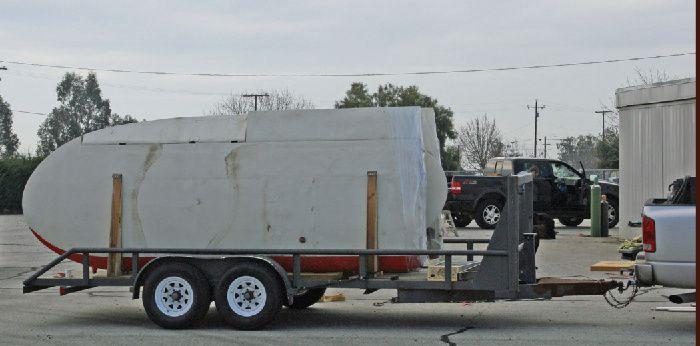
The Goodyear Tire & Rubber Co. Inc. of Akron, Ohio, purchased NC20967 on July 2, 1940. Finished in brilliant yellow with the Goodyear Wingfoot trademark (depicting Mercury’s winged foot) and flag adorning the fuselage, it was flown for sales and demonstration purposes. In February 1946, Waco Aircraft Co. performed a complete overhaul and re-cover of the SRE, and in January 1947, Goodyear changed out the engine.
Interestingly, while one may primarily associate tires with Goodyear, the innovative company had several notable achievements during the years it owned the SRE. Goodyear self-sealing tanks became the standard for combat aircraft; they built thousands of Corsair fighters, 21 blimps for the U.S. Navy, major components for B-29s, and developed a crosswind landing gear for aircraft.
The Industrial Colloids Co. of Emlenton, Pennsylvania, purchased the SRE from Goodyear in December 1947. It had the loop antenna and radio equipment removed in 1948, and in 1949, Paul Peterson of Altoona, Pennsylvania, bought the SRE. In 1950, John W. Benninghofen of Hamilton, Ohio, became the next owner. He kept it for a couple of years and then sold it to R.V. Pettit of Highland, Indiana, who in turn sold it in 1953 to James A. Meek and his wife, Hermie, of Pixley, California. They had the engine overhauled in 1954, but tragically, Meek wasn’t able to enjoy flying behind the throaty R-985 for long; he died in a crop-dusting accident in 1955 at age 37.
In April 1959, Clinton Randolph of Earlimart, California, acquired NC20967. A veteran of WWII, he’d flown night attack missions in A-20s and A-26s in Italy, and later shared his love for aviation by teaching his sons to fly, and ultimately became the longtime caretaker for the Waco SRE. In the ensuing years, the engine was overhauled and various wing and control surface repairs were made. Eventually the entire airframe was re-covered with Eonnex 205, a rotating beacon was installed, and the three 1-1/2-minute International flares were removed. When he passed away in December 2007, the SRE remained intact in its hangar, its red and cream livery that was once so glorious now cloaked in magnificent memories and a deepening layer of dust.

The Eighth Owner

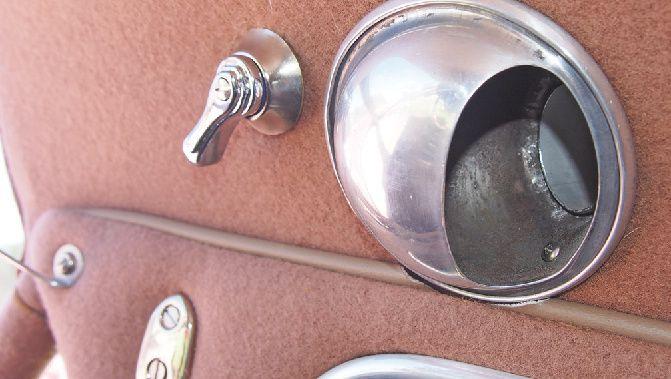
A couple of years later, NC20967 began its gradual transition from those dusky, twilight years into effulgent sunshine, when Walt and his mentor and partner, Bud, purchased it in 2009.

I’m very fortunate. … It was a real custom-built airplane in 1940, and 83 years later, it’s still amazing! — Walt BoweThe panel is original and includes a radio, transponder, and Garmin GTR225. The interior features original details. Photo above: The tasteful interior replicates the original. Photo to the left: Walt Bowe enjoys flying his 1940 Waco SRE.
JULY 24 - 30
EAA.org/Tickets
Bookmark EAA.org/AirVenture for AirVenture 2023 updates
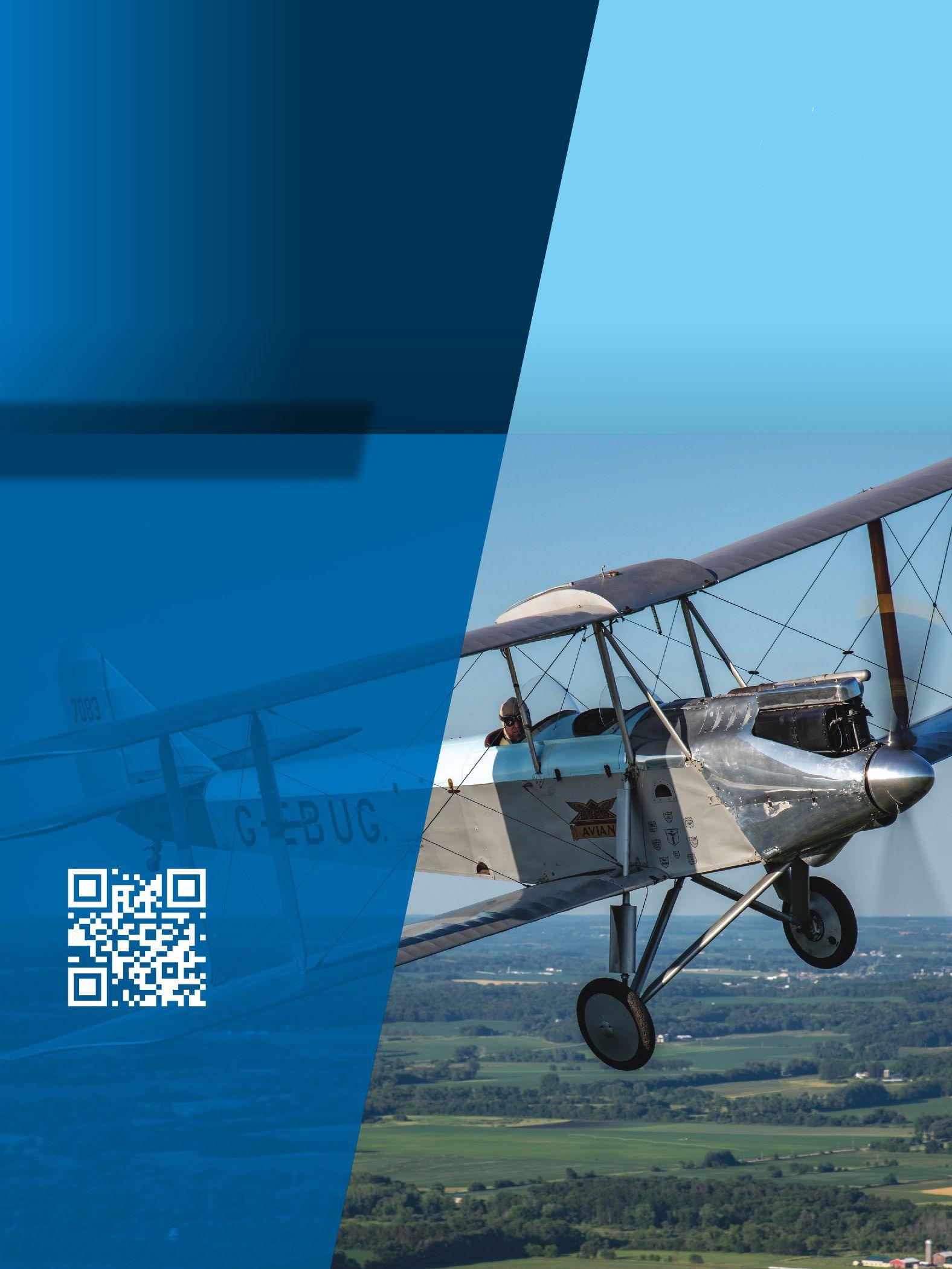
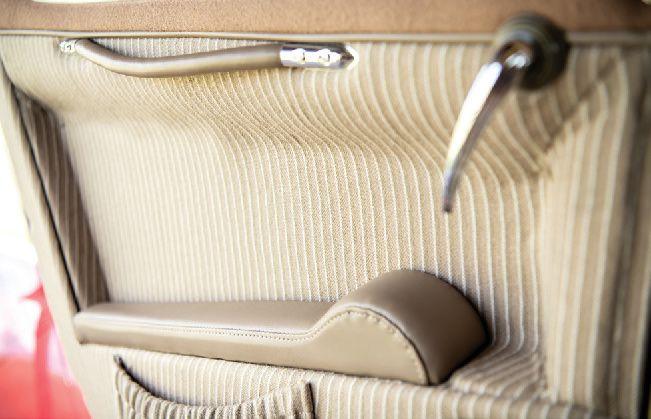
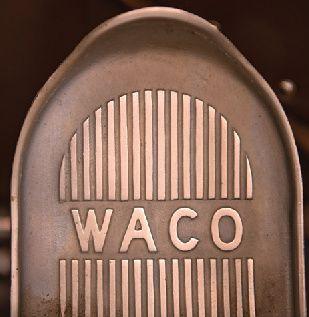
MANUFACTURED UNDER ATC 714. NOT ELIGIBLE TO BE FLOWN BY A SPORT PILOT.

ENGINE: 450-hp Pratt & Whitney Wasp Jr.
LENGTH: 27 feet, 10 inches
HEIGHT: 8 feet, 8 inches
UPPER WINGSPAN: 34 feet, 9 inches
LOWER WINGSPAN: 24 feet, 4 inches
EMPTY WEIGHT: 2,734 pounds
USEFUL LOAD: 1,466 pounds
PAYLOAD (WITH 125 GALLONS OF FUEL): 499 pounds
BAGGAGE: 100 pounds
GROSS WEIGHT: 4,200 pounds
MAX SPEED: 202 mph
CRUISING SPEED: 175 mph
LANDING SPEED (WITH FLAPS): 57 mph
CLIMB RATE: 1,550 fpm
SERVICE CEILING: 23,500 feet
FUEL CAPACITY: 108 gallons
OIL CAPACITY: 6.25 gallons
RANGE (AT 8.5 GPH): 1,070 miles
“The airplane had been kept in a hangar at Delano for 50 years when we bought it from Clinton’s widow, Jane Randolph. It had a half-inch layer of dust, but it was all there and all original. It still had the original logbooks, so it was a perfect candidate to restore. When we loaded the airplane to haul it home, it was like we were taking her husband with us,” Walt reflected poignantly.
Bud Field
Bud’s business success provided the means for him to achieve his dream of founding his own aviation company, Bud Field Aviation. His yearning for a 450-hp Waco was the impetus for acquiring the SRE. “Bud had a big collection of airplanes, and he said, ‘We should buy this SRE, and restore it together, and make it a company airplane.’ Bud was suffering from cancer when we bought it in November 2009,” Walt said. “His in-house restoration shop dismantled the airplane and started doing some of the work. When Bud died in February 2010, Bud Field Aviation kind of went into a holding pattern.”
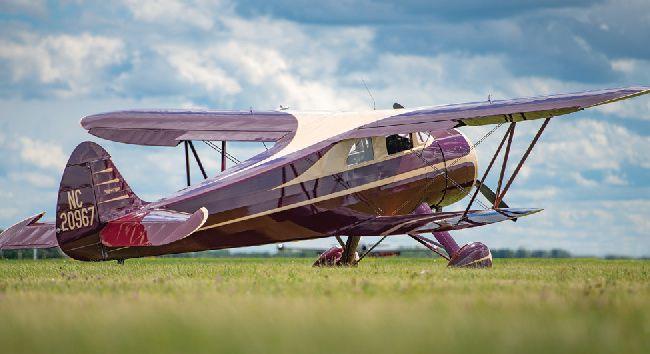
At that point, Walt carried the torch and took the project home from the shop in Calaverus, California, to his office in Livermore. “I had asked Rick Atkins if he would restore the airplane, but he was backlogged for five years, and I didn’t want to wait. So I sent it off to have some woodwork done and brought it home again,” Walt said. “I did some of the sheet metal work and some of the systems, and some overall cleaning up of parts, deciding what did or didn’t need to be restored.”
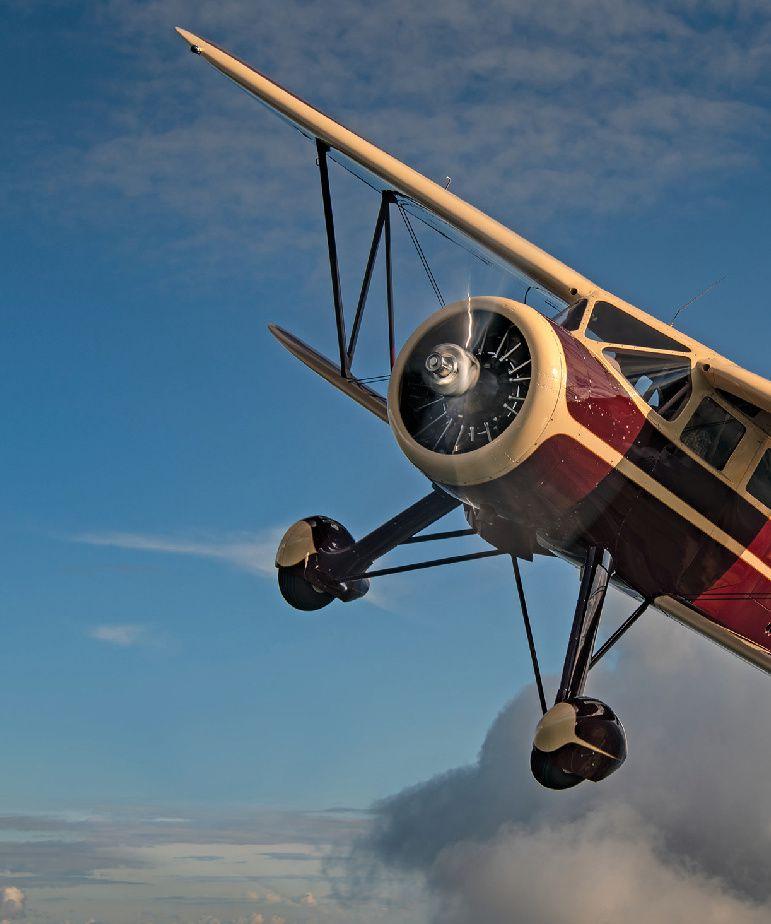
Walt got back in touch with Rick in 2015, and the SRE was soon ensconced in Rick’s one-man restoration shop, Ragtime Aero, in Placerville, California. Rick has earned a distinctive reputation for antique aircraft restorations (as well as providing Cessna 180-185 annual inspections and modifications). Though he’s lost count, it’s safe to say that dozens of spectacular restorations have emerged from his shop throughout 44 years, including Howard DGAs, a Luscombe Phantom, a Monocoupe 110 Special, and Stearmans.
Rick grew up with aviation; both his father and uncle were pilots and owned airplanes. As a youth, Rick enjoyed building model airplanes and working in his father’s hobby shop. He learned full-scale airplane restoration skills while working with Air Repair in Santa Paula for three years before moving to Placerville.
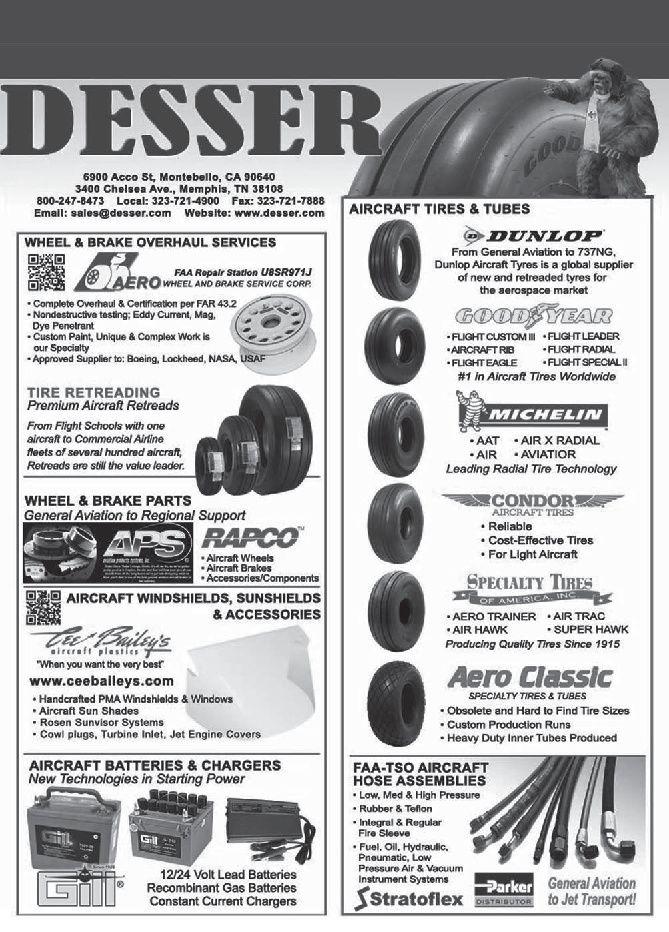
Rick not only coaxes vigor back into derelict airplanes, he masterfully transforms them into fine-flying art. When you behold a Rick Atkins quality restoration, you won’t forget it. Rick said the most rewarding aspect of his work is not only that “the finished airplane is the owner’s vision of what the airplane is supposed to be, but the most important thing is that they get to fly where they want to go, and don’t have troubles with their airplane, and get home safely. When you work on airplanes, especially in this world, you’re working for your friends, and you don’t want anybody hurt. You think about that.”
Rick finished the SRE in a year and a half. “Walt is the greatest guy to work for, and I think he envisions things kind
of like I do, as far as what the airplane deserves,” Rick said. “But I’d never touched a Waco until that one! I knew absolutely nothing about the engineering of Wacos, and what was difficult was that I didn’t take it apart. Some of the SRE was done when I got it; the lower wings were almost new. Otherwise, I just got boxes of stuff, so there was a lot of head-scratching involved.”
“Rick’s a magician, an absolute magician,” Walt proclaimed. “He tore all the fabric off and re-sheeted the wings with plywood, and then did the fabric covering using Stits [Poly Fiber] with an Aero-Thane finish. He built all new sheet metal for the landing gear and the cowlings. The airplane has a double firewall, so Rick insulated with some modern materials between them, and he did some ducting on the air coolers. So the cockpit’s very pleasant now; a lot of Cabin Wacos are very hot, and this one he nailed. In fact, another SRE got a firewall forward done by Rick because of the qualities of this one. This caliber of work is so typical Rick Atkins!”
Similar to other Cabin Wacos, the SRE’s fuselage is built of steel tubing with wooden formers and fairings, which lend a streamlined appearance to this fabric-covered biplane. The wings are composed of spruce spars, spruce and mahogany wing ribs, skinned with plywood and then covered with fabric. The horizontal stabilizers are built of wood, and the other
 Rick Atkins
Rick Atkins
tail surfaces are steel tubing The SRE stands tall on its semi-cantilever gear, and landings are cushioned with oleo struts.
Right off the top, Walt described flying the SRE as follows: “It’s interesting; I’ve owned a G-model Staggerwing, a Spartan Executive, and a DGA-11 Howard, and I kept this Waco. It’s a delight to fly, and it climbs great — about 1,000 fpm. It cruises about 175 mph, and the ailerons and elevators are all leadbalanced, so it’s got great control harmony.”
In the pattern, Walt lowers the electrically operated flaps at 120 mph, slows down to about 100 mph on downwind, then 80 mph on base, and about 75 mph on final. “I three-point it on in the 50-mph range, but it’ll wheel land beautifully. I’ve always been a three-pointer pilot so that’s just what I’m used to,” Walt said, “but it’ll do whatever you ask, and then it’s an easy, straight rollout. It’s very docile on the ground. Goodyear ordered this airplane with a steerable tail wheel, and we’ve had some maintenance fits with that, but it’s nice because you don’t need any brakes to taxi.”

Walt does fly at night, or in the early mornings when it’s still dark, and said the retractable Grimes 250 landing lights illuminate the runway well: “I have one set for taxiing and one set for landings — they shine at different angles so you can see. And the panel lights work great.”
With 108 gallons of fuel on board, and at 22 gph, the SRE can easily travel long distances. Last spring, Walt flew from California to Minneapolis (about 1,500 statute miles) in nine hours. “It moves along pretty good. I’ve flown it to Montana, Palm Springs, and I’ve taken Carlene to LA in it a few times for business,” Walt said. ”It’s also been to Washington and Oregon, so it gets used. I live 60 miles from my office, which is right next to an airport, so I’ve used it to commute to the office a few times.”
The SRE handily combines efficient cross-country capability with plush creature comforts. So much so, Walt said, that “Bud always said he wanted to sit in the back seat and have a cocktail! So in the back, there’s a mini bar. I’ve never used it, but I did it as a tribute to him.”
Walt’s penchant for authenticity spurred him to contact Goodyear in an attempt to obtain details of NC20967’s original paint scheme so it could be replicated. “They gave me such a legal hassle about it, and said that [if I used their logo] it had to be removable within a 24-hour notice, and I needed to notify them anytime I was going to fly it,” Walt said. “So I picked an original SRE scheme instead. Carlene has a maroon 1936 Cord Sportster convertible, and we just kind of fell in love with its colors, so we matched the SRE with a Stinson Maroon. She picked all the interior fabric and upholstery; it’s all vintage automobile stuff. The light sconces and ashtrays are original, and we copied the interior and stitching from old
sales information. I like keeping things original, so we wanted to duplicate that effect the best we could.”
With a nod to modern times, the SRE has just a few mods, including Cleveland 650-by-10 wheels and brakes, Aero Fabricators shoulder harnesses, a Garmin GTR 225, ADS-B, and a JPI Fuel Scan 450 fuel totalizer.
In the 200 hours it’s been flown since restoration, Walt said, “We’ve had no issues. It’s got a Tulsa Aircraft overhauled engine and Maxwell Aircraft Service overhauled propeller. I took the sales log that Andy Heins [of the National Waco Club] gave me, and went and found all the instruments, and Keystone restored them. It’s a pretty timepiece; the wheelpants are original, and it still has the flare panel in the cockpit and the flare tubes in the fuselage.”
The SRE is high on Walt’s list of favorites, and he enjoys sharing it. “I’m very fortunate,” Walt said. “The Waco SRE is great. It’s probably one of the easier-to-fly taildraggers I own, and I let lots of people fly it, because it’s such a nice airplane. It was a real custom-built airplane in 1940, and 83 years later, it’s still amazing!”
(Editor’s Note: To learn more about Walt Bowe and his airplanes, see the following Vintage Airplane articles: “Shining Star — Walt Bowe’s Lockheed Vega,” March/April 2021, by Rich Davidson; “Collecting Can Be a Disease,” May/June 2021, and “Keepin’ Up a Family Tradition — Walt Bowe’s D-18 Beech,” September/October 2015, by Budd Davisson; and “Antique Kid,” May/June 2013, by Jim Busha.)


JIM LYONS OF PUNTA GORDA, FLORIDA, has long been enamored with aviation oddities, especially the warbird and vintage types.

“I can’t remember a time when I wasn’t fascinated with airplanes,” Jim said. “My father was a Marine in World War II, and my interest in World War II history starts there. After the war, my dad became a flight instructor and was hired on with Capital Airlines. We lived close enough to the local airport that I could ride my bike there and watch planes. And that’s how my addiction started.”
While in high school in the late 1970s, Jim began his journey to the sky. He was the “old-fashioned student pilot” — when he was not in the air taking lessons, he was on the ground pumping gas and washing airplanes to earn enough to go back up. Jim zoomed through his certificates and ratings, including private, instrument, commercial, instructor, and airline transport pilot. After flying freight in Navajos and Aerostars, Jim began a career with a major airline in 1987 and is currently flying a Boeing 777.


“My interest in the old planes continued to grow,” Jim said. “Both my Stearmans were basket cases when I bought them. During the rebuild of my first one, I learned how to find parts and where to look for them. The parts search was very rewarding and addicting. I also began trading substandard parts for better parts. This included instruments, light panels, switches, sheet metal, fire extinguisher, and first aid kit, just to name a few. My goal with this project was to make it as original as possible.
“I love the history of these World War II airplanes,” he said. “Some of the veterans that have ridden in my blue and yellow Stearman smiled a lot and shed a few tears. For a moment, they were young again, until they looked into the hind-view mirror. I wanted to make sure history was preserved, so that’s when I turned to Rob ‘Waldo’ Lock, proprietor of Waldo Wright’s Flying Service at the Winter Haven airport, to make that dream come true.”
At 6 feet, 9 inches tall, Rob Lock, like the airplanes he restores, stands out in a crowd.
“I really started getting involved in restoring old airplanes through my father, Bob — learning how to work on wood, metal, fabric, and all other things that go on an airplane — in the late ’90s,” Rob said. “I bought a couple of Travel Airs, and my father would do work on them while I was playing basketball in Europe. When I would come home for three months in the summer, I would fly my Stearman during the day and do fabric work with my dad in the afternoon. He would teach me how to do things.”
Rob claimed that because of his size, the Stearman was a natural fit for him.

“I’m a big guy,” he said. “I don’t fit in a lot of airplanes, but I always fit in the Stearman. I grew up with one and flew them quite a bit. I have about 3,000 hours in the Stearman now, and I have learned how to work on them. More importantly, I have learned to appreciate how easy they are to work on. When I’m working on other types and other models, you really appreciate this Stearman.”
When Rob was approached by Jim Lyons to restore his Stearman back to factory-fresh condition, Rob took a tactical approach on how he would accomplish the restoration, since he was literally knee-deep in another restoration.


“About halfway through another customer’s project, I began receiving parts to Jim Lyons’ project,” Rob said. “Jim approached me years before and said, ‘I’m restoring the Stearman.’ Jim asked me, ‘Can I have you cover components to it?’ I said yeah. So the airplane would come to me in pieces. He brought me the horizontal stabilizer, so I would tear that apart and prime it and put it back together. And then I’d cover it. Then the elevators would come in, and I would do the same to that. He had somebody else cover the rudder and fin. But the big day came when the wings came in. They are incredibly labor intensive. It takes a lot of time, and a lot of money, and it’s really an important part of the

I love the history of these World War II airplanes. Some of the veterans that have ridden in my blue and yellow Stearman smiled a lot and shed a few tears. For a moment, they were young again, until they looked into the hind-view mirror.
— Jim LyonsJim Lyons Jill Manka and Rob Lock pose in front of the next Stearman project. Rob has passed on his master covering skills to Jill, as her handiwork was very evident on this Stearman.







process. To keep this project moving, I choose Dave Groh and his shop, Yesteryear Aviation in Mason, Michigan, to build all our wings. I think they’re the best in the business, personally. I’ve ordered three sets of wings from them over the years. They take about a year to build, so you have to be patient for them, but when you get them, they’re like furniture. I mean they’re gorgeous.”
By the time Jim’s wings were done, Rob retrieved them to begin the covering process. Rob’s choice of covering material is Poly Fiber.
“It’s Chevy versus Ford stuff,” Rob said. “There’s many different options. Poly Fiber’s been around since the ’60s. It lasts for a long time. Some people complain about the smell of Poly Fiber. I like the smell. To me, it smells like it’s progress. There’s so much work that is involved in these covering processes; I don’t want to have to re-cover an airplane in 15 years. It’s 1,000 hours to do a Stearman. So I want to cover it one time, and then I don’t want it coming back into my shop ever again. So that’s why I choose Poly Fiber.”
While the wings were being covered, Jim’s fuselage was being worked on at Kenny and Danny Rutten’s shop in northern Florida.
“They had overhauled the frame and built it up, and it was a long ways along,” Rob said. “It was not done, however. Jim got to a certain point, and he had to make a decision, and it was his to make. Do you take the fragile stuff that I had in my shop, the wings that were already covered, and risk damaging them in transit? Or do you take the stuff that is not really going to get hurt — a frame, landing gear, all the metal parts — you put that in boxes, and do you bring that stuff to where the wings are?”
Jim ultimately chose the second option and delivered all the metal parts and frame to Rob.
“I walked around his fuselage for seven or eight months,” Rob said. “I looked at it every single day, and I’m
like, ‘Wow, this is going to be kind of challenging.’ Because Jim had many artifacts he wanted on that plane. I mean, we’re talking, if there was an option that Boeing offered, he wanted it in that plane.”
Some of these examples include a signal light on the turtledeck. There’s a small box that goes in the rear cockpit, and you can use that signal light for Morse code, a very rare item. Another item is the oil dilution system, which Jim found parts for. Mainly used in cold-weather flying, once the cadets were done flying the Stearman for the day and ready to shut it down, you flip the switch, and it puts fuel from the fuel system into the oil system. The book called for running it for 30 seconds, and it dilutes the oil that’s gone into the engine. When the next cadet started it the next morning, the oil’s thin and your oil pressure won’t be 120 psi when you start.
“And that’s what these things had, that was an option,” Rob said. “No one is flying their Stearman when it’s below 30 degrees, or whatever, 40 degrees. This one can be flown. You can do anything you want with it.
“I had to figure out how it worked and wire it all in,” he said. “It is operational on that plane. Jim wanted a smoke system in, so that was installed, along with a Garmin avionics package. He decided against the strobe lights. But he wanted the airplane to be able to be flown in today’s airspace, so it’s got ADS-B In and Out. The list goes on and on of all the things that were installed in the Stearman.”
Restoring a Stearman, according to Rob, can be like the movie Ground Hog Day, where every




day is the same and you do not feel like you took a step forward.
“Every morning, when I’m lying in bed, I’m like, ‘Okay, what’s my game plan for today?’” Rob said. “I kind of come up with a mental note — ‘I’m going to work on this airplane, and we’re going to get A, B, C, and D done today.’ And it’s kind of been working for me. So when I go to work, I have a plan of attack. Unfortunately, many of the times you have to put stuff on the airplane and make sure it fits, and then you have to take it off; then you have to prime it, paint it, and you have to put it back on. When we started covering Jim’s fuselage and the wiring was done, and you start looking at it and you are like, ‘Wow, this is a nice plane.’”
From the time Jim started the restoration on his Stearman until the time the airplane flew again, 16 years had passed. In that time, Jim had accumulated all sorts of what he calls “oddball parts.”
“Jim is very knowledgeable about the Stearman,” Rob said. “So he would buy these parts, and he’d just store them, and then he would bring them to me.”
These include a very low-time McCauley prop he bought 20 years ago and put underneath his bed. Besides radio and navigation equipment, Jim did not want modern stuff in the airplane, because he wanted originality, to a certain extent.

“There’s no Airwolf oil filter in it,” Rob said. “It has the screen, as it was original. There is no bracket air filter. It has the original air filter in it. The whole front of the airplane is as original as we can make it. I mean, you go back behind the firewall wall — he wanted a smoke system in it. We put in an original E-80 electric starter. And it does have a Jasco alternator system in it as well.
NUMBER OF ENGINES: 1
ENGINE MAKE: CONTINENTAL
ENGINE MODEL: W670
ENGINE POWER: 220 HP
RECORDED TBO: 1,500 HOURS
STANDARD FUEL: 46 GALLONS
MAX FUEL: 46 GALLONS
75 PERCENT CRUISE: 124 MPH/107 KNOTS
STALL: 52 MPH/45 KNOTS
RANGE: 505 MILES/438 NM
SERVICE CEILING: 11,200 FEET

RATE OF CLIMB: 840 FPM
WINGSPAN: 32.33 FEET
LENGTH: 24.6 FEET
HEIGHT: 8.85 FEET
EMPTY WEIGHT: 1,936 POUNDS
GROSS WEIGHT: 2,717 POUNDS
“To the point where the brakes, most people say, ‘Got to put those Red Line brakes on it. Got to put disc brakes on it,’ he said. “And I have Red Lines on my Stearman, and they are really good brakes. But the original Hayes brakes are really good brakes as well. And the only problem with the original brakes wasn’t the brakes; it was the master cylinders. So he got modified original master cylinders. They’re called Gid Townsend master cylinders. The originals were cantankerous; they would lock up and weren’t very good, and they’d fail. So Gid modified them and bored out the reservoir and he sleeved them, and it’s all STC’d. So it’s got the original master cylinders.”
Jim found two original map cases, one in the rear seat and one in the baggage compartment. Jim’s Stearman has the enlarged baggage compartment, along with the heavy-duty Dusters & Sprayers tail wheel.

“After 16 years, he didn’t skimp on anything; he wanted the best one that he could have restored,” Rob said. “This airplane came to me with all the instruments done. But to the point where, originally, there’s different panels for the Stearman. There’s PT-13 panels. There’s PT-17 panels. There’s N2S-3 panels. There’s N2S-4 panels. There’s all different types of panels. I think there were seven different panel layouts. And each model had a specific panel layout. And so some instruments have a little cutout in the dials; some don’t.

“So when you get these panels, there’s these holes, and the one might have a little dog up on the top or a little cutout on the bottom. And then let’s just say you’re putting an instrument in that hole that doesn’t have that, so you have these holes that stand out like a sore thumb. He had new panels made, and the holes were cut to fit his instruments. So all the instruments match in color; they’re all overhauled by Keystone. All the panels were made for the instruments. And so there’s no holes that are in the panel that shouldn’t be there. New windscreens, everything on the airplane was new. I give Jim credit, because he was involved in the project.”
When it came time to choose the final paint scheme, Jim had already decided that one a long time ago.
“Jim had seen Fred Wright’s yellow and silver Stearman at Galesburg, 10 years ago, or longer,” Rob said. “He saw that airplane there and did some research, and that was actually a legitimate paint scheme. It wasn’t just in somebody’s head. And it was a unique paint scheme that you didn’t see very often. So he decided on that when he saw that airplane. And he stuck to his guns, because the world has enough blue and yellow ones. The world has enough yellow Stearmans. It’s like these oddball colors that are unique and military and it’s historically accurate. That makes it kind of fun.”
Rob didn’t have to look far to find a qualified painter to attack the yellow and silver scheme.
“I have a guy at our airport; his name is Neal Butterworth. He owns Heart of Florida Aviation,” he said. “I took the airplane through all the STC steps of Poly Fiber. You have to put Poly-Tone on it. And then once you do that, you can put some more modern coatings on it that looks better than the factory urethane paint. And you get to a certain point where originality crosses a boundary. You want it to be original, but were they glossy in World War II? No, but do you want it to show well? Yes. Do you kind of look the other way with the paint? Yes, for a lot of the customers.”
Jim wanted his Stearman to be glossy. Neal shoots PPG paint. He likes it, and he knows how to spray it. So that’s the paint that Jim and Neal chose to put on this airplane. With the Stearman, all the fabric parts were painted white Poly-Tone.

“You do that because when you’re going to be painting yellow, if you put yellow over silver, the

yellow’s going to come out dull. It’s going to not be a true yellow,” Rob said. “The silver color of the Poly-Spray will alter the final yellow color, which you don’t want. So you spray two coats of white Poly-Tone on the fabric surfaces and give it a good base. And you want it all white.
“So when you spray yellow on it, you’ll use actually less yellow than you would if you were spraying over silver,” he said. “And it’s going to make the color pop. So we just do that with the whole airplane. Even the silver that went on the fuselage; I painted all that white. You have to use the PolyBrush, and you got to use the Poly-Spray, then you got to use the Poly-Tone. You have to do that to satisfy the STC or it’s illegal. But over the Poly-Tone, you can spray the urethane paint.
“So everything has to be in yellow,” Rob said. “Now, when you start doing the metal panels, on Stearmans, the inside of the airplane’s all OD [olive drab] green. So you paint the panel, you prime the panel with green epoxy primer, and then you have to mask off the inside and spray the outside white. And then it goes in for final paint. So it’s a lot of labor. So when you start dealing with Stearmans, I mean, the owner has to understand the steps and the process and the amount of work and time it takes, because you can’t rush that stuff. And it’s expensive. It gets to be expensive. But you get an airplane that looks like Jim’s at the end, and that makes it all worthwhile.”
When the Stearman came back from the paint shop and Rob started putting the center section on it and then the engine on it, it started taking up more room in his hangar.

“And then the tail goes on it,” Rob said. “And then at that point, the wings were in the wing rack all painted, and the star and the bars are on it, and then it’s like, ‘Wow, it’s kind of starting to get exciting, because this thing’s about three months away from flying.’

“The cool part I thought is, when I put it all together, then it went back over to the paint shop, and then they put all the stencils on it. Neal put the insignias on both sides of the fuselage. When it came back, I would just go out there, sit in front of it, and stare at it, because it was shiny, in your face, and it was a beautiful plane. In addition, it was like, ‘Wow, this thing’s come a long ways.’ It was born in that hangar, which was kind of cool.”
The BC400 Alternator system is now FAA-approved for Piper J-5C, PA-11, PA-12, PA-14, PA-16, PA-18, PA-20, and PA-22 aircraft. Includes brackets for Wide- or Narrow-deck engines ... with NO change of oil cooler location required!



I was so relieved, because after all that work and all the time Jim had put into creating this historic time capsule, it won the Yellow Peril Award. So it is bittersweet as a mechanic.
— Rob Lock

Rob pushed hard to finish that Stearman so it could fly on August 28, 2022. That date to most people is insignificant. For some, it’s just another day. But for this airplane, it was a special anniversary.

“On the 28th of August 1943, this airplane flew for the first time,” Rob said. “When I found that out, I was like, ‘We’re going to push for this date.’ And it turned out that was a good weather day, the airplane was ready to fly, and Jim flew his restored Stearman for the first time. A few days later, Jim asked me and my girlfriend, Jill, to fly the airplane ‘home’ to the Stearman gathering in Galesburg. When we left for Galesburg, it had two and a half hours on it, which was great.”
Jim flew his yellow and blue Stearman from Punta Gorda to Winter Haven.
“We met him at the gas pump and we left, and I ran that thing hard all the way up there, because the engine needed to be broken in,” Rob said. “It’s redlined at 2075. So I would run it at 1900 rpm, then I’d run it at 1950, then I’d bring it back to 1875, 1850. So you’d run it in different power ranges, because the different power settings are going to give you different cylinder pressure, and you want the rings pushed up against the side of the cylinder so they’re rubbing and they’re breaking in.”
At Galesburg 2022, Jim’s Stearman received a lot of looks and attention.
“I was so relieved, because after all that work and all the time Jim had put into creating this historic time capsule, it won the Yellow Peril Award,” Rob said. “So it is bittersweet as a mechanic. I learned a lot on this project, because I had to, because it was challenging at times. And everything had to be perfect on his plane, because the airplane was built for a specific reason. It was built to kind of do what it did at Galesburg. It was built to win an award there. And he pulled out all the stops for this plane to be done, and it did it, which was great. I have a saying I remind Jill of a lot: ‘The best two days are when it comes in and when it flies away.’ It is true.
“Before doing restorations, I was always under the impression that ‘I don’t want to work on somebody else’s plane and build it, because you get attached to it and then it leaves you,’” he said. “And then you’re like, ‘Man, but it’s mine; it’s not yours.’ But I don’t feel that way. Because I learned a lot on this Stearman, and look forward to the next one.”
“The best two days are when it comes in and when it flies away.”
— Rob LockRob and Jill, in the silver and yellow Stearman, watch as Jim Lyons peels away in his blue and yellow one.



WHILE IT MAY BE a generational point of view, there is something about the Model 18 Twin Beech that refuses to age the way so many other mechanical contrivances have. Yes, its twin R-985 Pratt & Whitney engines connect it to an earlier era, but the overall design has avoided aging. Yes, it’s not super modern, while at the same time, it’s not truly old. It just is. And that is the definition of “classic.”

Here are some interesting Beechcraft facts: The twin-engine turboprop King Air entered production in 1964. However, the 1937 Beechcraft Model 18, the already-27-year-old iconic Twin Beech, its two P&W 450-hp R-985s rumbling their familiar song, didn’t go out of production until 1970. Six years later! Two wildly different varieties of round engines were in production for over half a decade! In fact, Beechcraft’s first “modern” cabin class twin, the Twin Bonanza, went into production in 1958. That morphed into the Queen Air, sort of a flat-engined, King Air in 1960, and then it got turbines in 1964. Through it all, the stately old Beech 18 kept plugging away.

Beechcraft had an interesting problem in that the Twin Beech offered comfort, utility, and passenger-carrying capabilities that none of the rest did. Plus, after more than 25 years of serving, it had become the “comfortable old shoe” of militaries, corporate aviation, and small airlines. Everyone knew and trusted the airplane.
A difficulty in talking about Twin Beeches today, 53 years after it went out of production and an amazing 85 years after its birth, is coming up with a definition for Twin Beech, which, by the way, was never an official designation. The variations in type are endless, the theater of operations global, and the stories of its service sometimes astounding. Not many airplanes can lay claim to carrying presidents, billionaires, student pilots, bombs, machine guns, and freight. During its lifetime, the Beechcraft Model 18 has pretty much done it all. And it has lived the ups and downs that characterize so many different parts of an airplane’s life. Since its birth, it has gone from prized warrior, to valued part of corporate culture, to freight dog, to deserted hulk, to sought-after vintage royalty.
As with the DC-3/C-47, the Twin Beech owes much of its current survival rate to a war (250 are estimated by various sources to still be flying). In 1937, when the first Model 18 took to the air, powered by a pair of Wright R-760 Whirlwind engines with very 1930s-looking bumped cowls, sales were slow. The entire country was still trying to climb out of a strangling Depression. Initially envisioned as a form of feeder airliner, a role a number of aircraft manufacturers were also courting, the Twin Beech, with its 11 airline

seats, would have seemed to be the perfect airplane for that purpose, and it was. However, it was ahead of the demand. Even though the Depression was losing its grip, the airlines were still struggling to grow, and the concept of hopping an airplane to go somewhere was still not a universally accepted concept. Plus, the concept of feeder airlines, which would bring passengers from smaller cities to the major hubs where the DC-3 was king, hadn’t taken hold yet. However, war was just around the corner and along with it a windfall for Beechcraft.
Three years after production started, when Zeros, Vals, and Kates poured over Kaneohe to the east and Haleiwa to the north heading for Pearl Harbor, Beechcraft had reportedly sold only 39 Model 18s. Less than four years later, more than 5,000 Twin Beeches — known as Expediters, Kansans, Navigators, etc. — had been delivered to every arm of the U.S. armed forces and many Allied forces. Without firing a shot, the airplane had proven itself to be one of the most useful aircraft in military inventory because it did so many things so well. It was this ability to be a jack of all trades and master of most that, when the war was behind it, its future was guaranteed.
In the aftermath of World War II, tens of thousands of military aircraft, from B-17s to Stearmans, were sold for pennies on the dollar or simply converted into beer cans. Not so the Twin Beech. Utility and transportation are both capabilities for which there is always a market, whether in or out of the service. Each of the branches of
service rebuilt many of their earlier C-45s (Air Force) and SNBs (Navy) as transportation and freight haulers and kept them in service. Officially, the Army, reportedly the last to keep them in service, retired its C-45s in 1976, but many were seen to still be wearing their uniforms for years after that.
After the war and through the 1970s, the Model 18 lived several different lives; a substantial industry developed, aimed at modifying the basic airplane in a wide variety of ways. These included reshaping the fuselage for more speed, more seats, more headroom, and accessibility (cargo doors) and replacing the nose to mount a nose wheel, making it a tri-gear airplane, a modification that Beechcraft included in the final H models.

It’s notable that, while numerous companies were modifying the airplane, Beechcraft was still building them new to include the higher fuselage and increasingly luxurious corporate and passenger seating. It was



the rare corporation during that period — the 1950s, ’60s, and ’70s — that didn’t include a Twin Beech or two in their corporate fleet. It was also common for governmental agencies and governments in general to use the comfortable and well-proven old airplane as their VIP transportation. One of those governments was Mexico.
In 1962, Mexico purchased a new G18S Model 18, serial No. BA-616, which served as its presidential transportation for a decade. That was the first step in a long journey that would eventually place it on the flightline at EAA AirVenture Oshkosh with Ken McKenzie, EAA 1181112, of Fort Lauderdale, Florida, at the controls.
In the 1960s, as the Twin Beech was coming to the end of production, Canadian Ken McKenzie was in school in Sioux Lookout, Ontario, Canada. Directly out of high school, he went to flight training for the Royal Canadian Air Force, where he flew the Kiowa helicopter and Twin Otter over 14 years, serving in postings in various Canadian provinces, West Germany, and the High Arctic. In 1995, he began flying DHC-8s for Canadian Regional Airlines, which began a career leading to management positions in a
number of airlines and becoming a member of EAA’s board of directors in 2016.
“During my stint flying the Dash 8s,” he said, “our family took a two-year leave of absence to do overseas humanitarian flying in Guinea, West Africa, with the United Nations High Commissioner for Refugees, flying King Airs, one of the Twin Beech successors.”
Later in his career, as chief operating officer of Airbus Americas, he found himself commuting back and forth from his home in Florida to the Airbus headquarters in northern Virginia.
“Tired of the ‘joys’ of commercial air travel, we purchased and restored a Lancair IV-P, thus shortening my commute to four hours,” he said. “What a joy! Unfortunately, on August 30, 2015, my wife and I experienced a total engine failure on departure from Fort Lauderdale Executive Airport (KFXE). We managed an engine-out landing on the top of a levy and almost pulled it off. After touchdown, the aircraft tracked straight and true for over 750 feet but, due to decreasing rudder effectiveness with deceleration, the

aircraft dropped off the side of the levy, spun around 180 degrees, and burst into flames. I sustained third-degree burns to 10 percent of my body and spent three months in recovery. Such an event can certainly sideline one’s passion for aviation, for a time.”
EAA AirVenture Oshkosh 2016 was Ken’s first foray back into the general aviation community.


“Attending with my wife, Sonia, and youngest daughter, Haley, I realized just how much I was missing the spirit and camaraderie of aviation,” he said. “As we watched John Mohr work his magic with his stock 220 Stearman, Haley said, ‘Dad, you need to get an airplane that is simply just fun to fly.’ What John was flying looked like just that right amount of ‘fun.’ Soon we found ourselves the proud keepers of a 1941 N2S-4 Stearman. Painted in colors of the era, we affectionately named her Daisy and quickly came to realize that it is a privilege to be the one who cares for an aviation artifact on behalf of the next generation.
Ken said he and his wife naturally gravitated to vintage aircraft, and part of that attraction was the way it

brings people together. At the time, she was a 60-hour pilot with a ’46 Ercoupe, and they were both struck by the kinds of people they met who had the same interest.
“Then we saw a Twin Beech on floats,” he said. “That touched a very powerful chord, and in nothing flat, we heard ourselves saying, ‘Let’s do a Twin Beech.’
“For whatever reason, we automatically knew that we should do our best to find the best Twin Beech we could, because we knew restoring or rehabilitating one would be beyond our abilities, both mechanical and time-based. We wanted an airplane that we could fly from day one and that would draw in fellow vintage lovers with their own Beech 18 experiences and stories. We looked at a number of them but were attracted to 50WA for a number of obvious reasons. We expected to use the airplane for its original purpose, meaning hauling people, so safety and reliability were key. 50WA was unique in that area because it was, relatively speaking, a nearly new airplane. Kurt Tedham in Phoenix, Arizona, and his son had seen to that.
“Most Twin Beeches have gone through a period of their lives where they were being worked really hard. Often as freighters,” Ken said. “They had gone so far down in value that they were often viewed as tired, almost expendable, trucks, and many were left sinking into the weeds on remote airports. Part of that was because they almost all had a sometimes-fatal flaw: The steel tube structure that forms the wing center section and ties the wings, engines, and landing gear together can rust. Making it much worse is that there was a common STC’d modification that entailed bolting external straps to the bottom truss member that caused almost as many problems as it solved. The bolts that held the strengthening strap in place gave access to the inside of the tubing for moisture, so they could rust internally, which many did. The ADs that applied included X-raying the entire assembly with a high probability the entire structure might need replacing, which usually meant the airplane involved was judged to be scrap because they weren’t worth the price of repairs. By 1962, when 50WA was built, it was still a relatively new airplane, and being part of the Mexican presidential fleet, it hadn’t fallen prey to the demands of low-buck freight haulers. In fact, it had sat in a governmental storage facility for 20 years before it was sold to a U.S. company that specialized in buying Mexican airplanes.”
Ken described what made 50WA a unique airplane.
“When it came to the States, it had a little over 4,000 hours’ total time, which for a Twin Beech means it was barely broken in. Plus, virtually every one of those hours was providing VIP transport. It hadn’t been flown in and out of remote, usually gravel, mining strips, hauling equipment or anything that could be stuffed into it. It had essentially been a limo for the president and his staff, and although it had been in storage for some years, it had been protected the entire time. Vandals had no access to it, so
although it was weathered, it didn’t have the dings and scars that utility aircraft always accumulate. Everything about the plane remained amazingly fresh, including the engines, and there was apparently zero corrosion throughout.”
And, according to Ken, the absolutely best thing to happen to the airplane was being bought by Kurt Tedham and his son in 1989.
“The airplane had one previous owner who had the spars X-rayed, the API spar strap installed, and registered it with the FAA,” Ken said. “Shortly after that, it was ferried down to the Tedhams, and it is difficult to describe the remanufacturing — not the restoration, but the remanufacturing process — they put the airplane through. Beechcraft could not have done a more thorough job. They went well past the normal standards a project like this entails. For instance, every single part used in the rebuild, right down to the flat washers, has a traceability document for it. If a part wasn’t riveted to the airframe, it was removed. No two components were left bolted together. They were separated, rebuilt or replaced, and epoxy primed before reassembly. Every single fitting of any kind, be it the wing fittings, landing gear components, etc., everything was rebushed, bolts replaced, and epoxy primed or anodized, depending on the application. All of the original fabric-covered control surfaces were refreshed and then metalized.
“The engines are amazing,” he said. “Virtually every part on them is either new or first run. Finding first-run R-985 parts is like going on a treasure hunt, but the Tedhams kept after it until they had what amounted to new engines on both sides. Amazingly enough, one of the props is actually a factory-new item. As elsewhere on the airplane, if anything on the engines wasn’t new, it was brought up to like-new standards, and they run like new engines.
“The interior was stripped down to the fuselage skins and spun-slag installation installed, which has four times the sound-deadening effect of Fiberglas,” Ken said. “You wouldn’t believe how quiet it is in there. All upholstery was replaced with maroon leather with a gray wool headliner installed. The interior was a very corporate arrangement, with seats facing one another with desks and cabinets. All of the woodwork was sent out to be reveneered and refinished. The Tedhams didn’t miss a single trick. None. However, when they sold the airplane, the fuel system and instrument/avionic panel had yet to be completed.”
The Tedhams sold 50WA to Barry Hancock, and he contracted Taigh Ramey of Vintage Aircraft to complete the aircraft, which included adding avionics and the remaining fuel system.
“Barry flew it less than 300 hours, and I purchased the aircraft in October of 2021,” Ken said. “My big
addition to the aircraft was to redesign the instrument panel, adding a Garmin GI 275 attitude indicator and Garmin GI 375 multifunction display to each pilot position. The instruments tie in nicely to the onboard GTN 750 and GTN 650 navigation systems.”



Ken described how the airplane flies.
“It’s so smooth and responsive, it’s an aerial Mercedes or Cadillac,” he said. “I’ve used it for carrying personnel for some of my charter school projects, and while it may be slower than a jet, it is many times more comfortable and enjoyable. Everyone we’ve ever carried loves the experience. It’s more than transportation. It is a window into a time when traveling meant more than simply getting there. The trip itself was reason enough to be airborne. And every time those two throttles move forward against the stops and I let the tail come up in the air, I am very, very conscious of the responsibility I bear, not only to my passengers but to the airplane itself. The instant I crank just one engine and it coughs into life, it is reminding me that I’m being trusted with an invaluable piece of history. And don’t kid yourself, that can be a very weighty responsibility. However, I love it! When Sonia and I are watching the sun set from the flight deck of 50WA, I can’t think of anywhere else on earth I’d rather be.”
In many ways, the Twin Beech is forever. There is absolutely no doubt that, even as you’re reading this, somewhere in an obscure corner of the world, there is a ratty old Model 18 turning final to a short stretch of broken asphalt or gravel, earning its keep. While many 18s, like 50WA, are spit and polished and on display at flyins, there are still those out there working for a living. And there probably always will be.
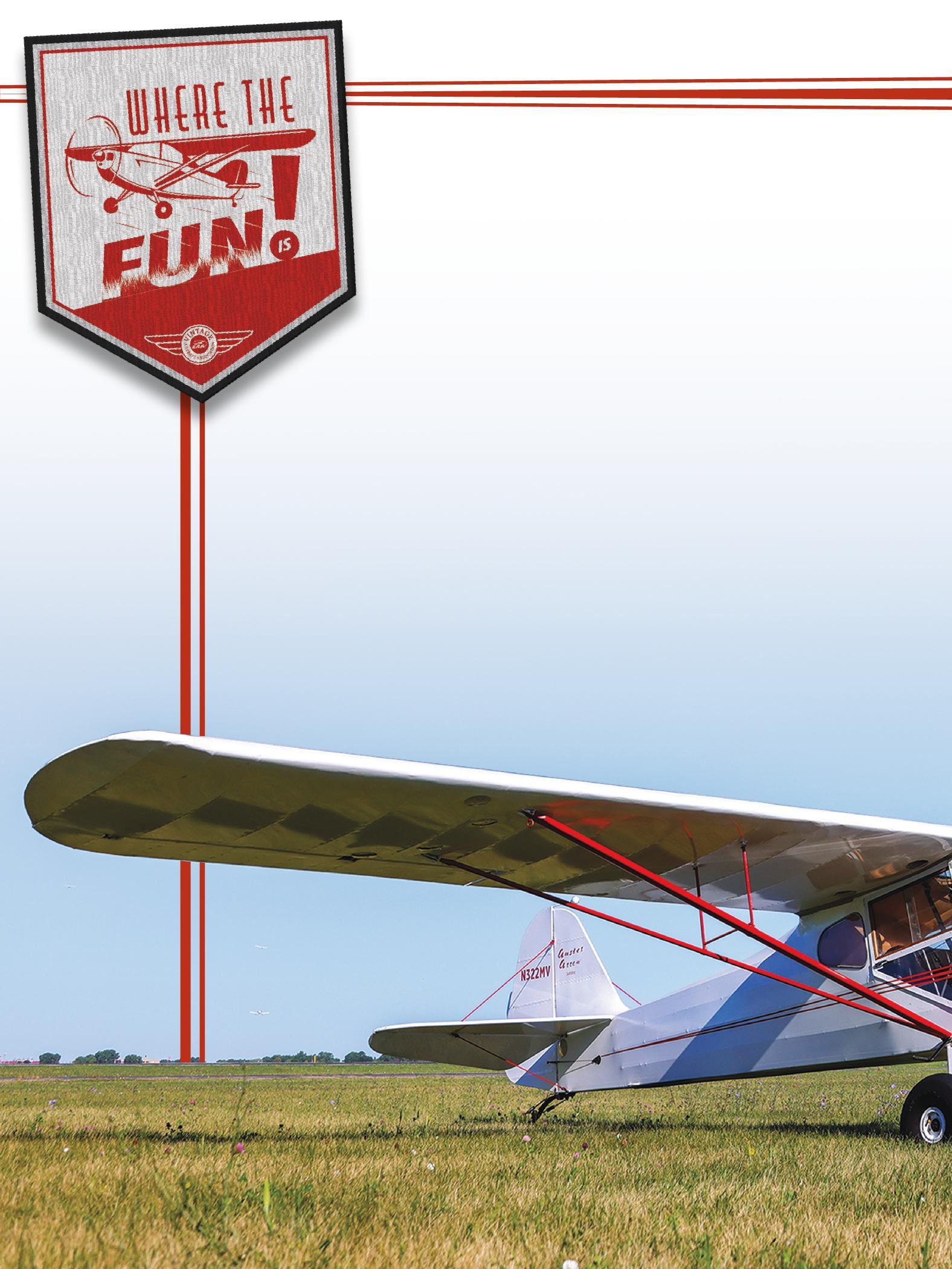 BY HAL BRYAN
BY HAL BRYAN
“THE AIRPLANE JUST HAS always been there, always been part of the family,” said Justin Spence, a pilot, mechanic, and builder/restorer whose 30-year (so far) aviation career started the day he was born. The airplane he was talking about is a 1947 Auster J-2 Arrow, an airplane that looks like a Taylorcraft but isn’t exactly. The Auster’s history begins only shortly before its first encounter with the Spence family.
In 1937, the Leicestershire Aero Club, a flying club founded in the English East Midlands in 1909 that is still going strong today, imported some 40-hp Taylor Cubs, followed by a 40-hp Taylorcraft Model A. One of the club members, A.L. Wykes, a pilot who’d started flying just as the Royal Flying Corps was transitioning to the Royal Air Force toward the end of World War I in 1918, was impressed by the Taylor designs. In 1938, he visited Bob Taylor in the United States and struck a deal to manufacture Taylorcrafts under license back in England. According to Chet Peek’s The Taylorcraft Story, at the end of his trip, Wykes sent a cable to his wife that read, “Returning home, going to make aeroplanes!”
His new company, Taylorcraft Aeroplanes (England) Ltd., did just that, starting with the Taylorcraft Plus C, essentially a Model A that had been updated to conform with British regulations. The Plus C led to the Plus D, powered by a Blackburn Cirrus Minor engine. The military version of the Plus series was named Auster I, after the Roman god of the south wind, and that name stuck with the next several variants. Austers
served in the RAF during World War II as spotters and liaison aircraft. After the war, as designs continued to develop, the company was renamed Auster Aircraft Ltd. in March 1946, and operations were consolidated at Rearsby Aerodrome.
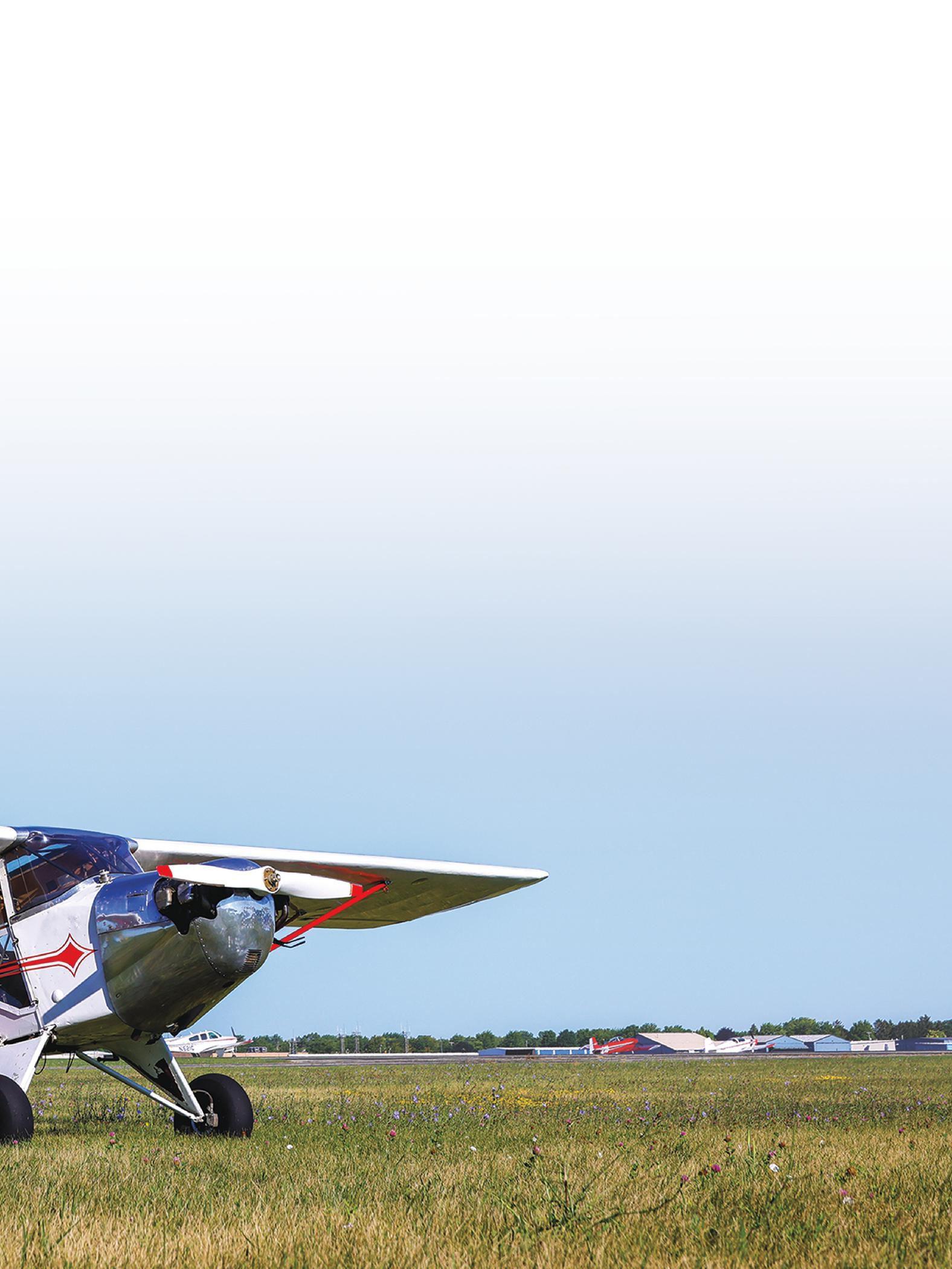
Postwar production kicked off with the J-series, including the J-2 Arrow, a high-wing, side-by-side taildragger, with a traditional steeltube fuselage, spruce spars and ribs, and fabric covering, powered by a 75-hp Continental engine. The airplane still had a lot of Taylorcraft DNA, but the differences were in the details.
“One of the big differences between this Auster and a Taylorcraft is this has sticks in it,” Justin said. “The sticks are mounted to a U-channel the same way that the Taylorcraft does the yokes. And in fact, you can unbolt this control system and bolt it into a Taylorcraft.” Other differences include the Auster’s semi-symmetrical wing that permits mild aerobatics, a counterbalanced rudder, a different trim system, and hardware differences like metric bearings and the like.
Auster continued until 1961 when it was taken over by Beagle Aircraft Ltd., which went out of business in 1969.
Long before that happened, the airplane that would become an heirloom, serial No. 2373, rolled out of the Auster factory in Rearsby in 1947. Then, in a story we’d love to hear, it flew to Rhodesia (now Zimbabwe) in Southern Africa a few years later. Not long after, the Auster lost its wings in a battle with a couple of trees and was listed for sale as a project.
Some of us, even if we don’t usually admit it, quietly want to believe that airplanes, especially the old ones, somehow have souls. It’s a pleasant thought, one that seems almost fully borne out at key moments, like those golden-hour threepointers where you swear you can feel the blades of the grass tickling the tires as you and the airplane cooperatively pursue that one perfect landing. But life has its way of constantly reminding us that we must take the good with the bad. If an airplane has a soul during the happy moments, then it must in the sad ones, too. The idea, then, of a humble little taildragger, a double amputee, sitting pitiably wounded in a hangar slowly losing hope for its future is achingly poignant. With the benefit of 70-plus years of hindsight, knowing that the airplane’s flying life was really only just beginning, that poignance fades, but it will still eat at you if you let it.
Vincent Aloysious Spence, better known as Mike (or “Pa” to his grandson Justin), was born in 1930 and learned to fly in Rhodesia in the early ’50s under the auspices of a Royal Air Force civilian training program that was a holdover from the war. He trained in a de Havilland Tiger Moth, and later partnered on one, but before that, he and a friend came across the J-2 for sale as a project.
“My grandfather bought it for the first time back in … the early ’50s,” Justin said. And, yes, he said “the first time” — more on that later. “He and a friend of his had bought the project crashed.”
Mike, who was working to become an aircraft mechanic, and his friend Jerry (that’s Uncle Jerry to Justin) got the airplane repaired, rebuilt, and ready to fly. Ready, that is, except for one thing.
In 2022, Justin wrote a story, “The Little Auster,” which was one of the winners of EAA’s Pilot Your Own Adventure Writing Contest, supported by Flight Outfitters. “Mike and Jerry get the little J-2 back up and flying,” he wrote. “But even in the ’50s the Auster is plagued by the biggest problem of all in aviation — paperwork.”
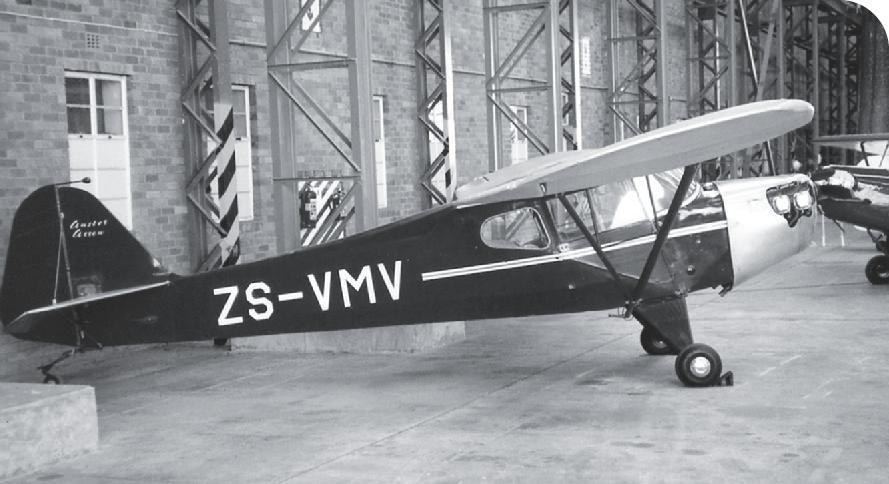
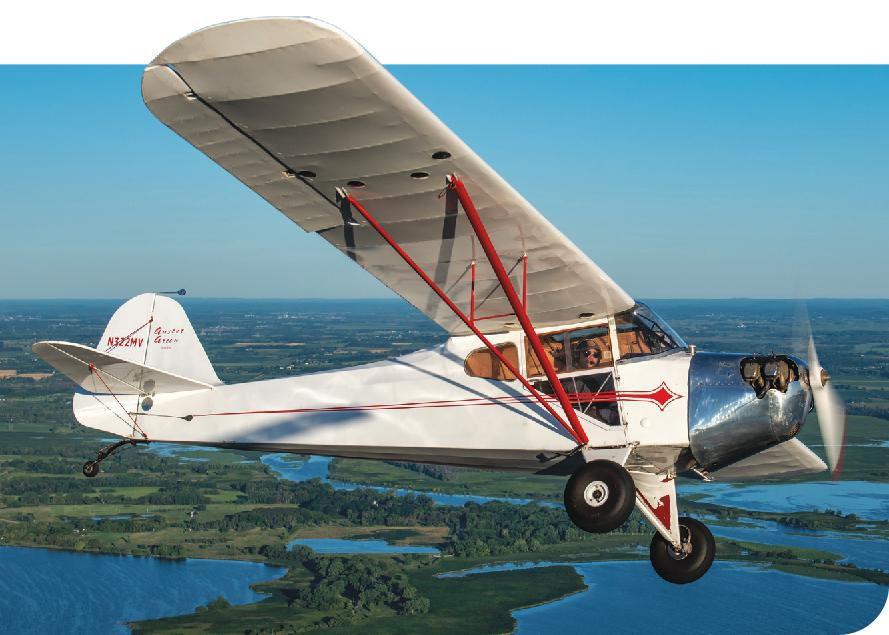
If this part of the story had taken place in the United States just recently, the next part of this article would vaguely explain that Mike and Jerry got the paperwork sorted and began flying the Auster, letting the reader infer that things happened in that order. But, since it took place across the world nearly 70 years ago, it seems likely that the statute of limitations has run out, especially

since the country where it happened no longer exists. It turns out that Mike and Jerry trusted their engineering more than the government’s bureaucracy and, when patience wore out, just went ahead and flew it anyway for several weeks. When the Rhodesian official finally came to do the inspection, it turned out that his favorite fishing hole was right next to Jerry’s farm — friendships were made and apologies accepted, and 2373 was given an airworthiness certificate.
Mike and Jerry enjoyed the Auster and, shortly thereafter, the Tiger Moth they bought together until somewhere around 1962, when Mike and his wife decided to take their three kids and move to South Africa. Life happens, moves and kids are expensive, so Mike sold the Auster as a matter of course, likely thinking that was where the intersection between 2373 and the Spences would end. He stayed active in aviation, bought a Piper Vagabond, and continued to work on and restore other aircraft.
Over time, he developed a keen interest in amateur-built aircraft as well, and he had already assembled an informal group of like-minded people when he first learned about EAA. Mike began corresponding with Paul Poberezny and in February 1969 chartered EAA Chapter 322 in Johannesburg. The chapter, with Mike as president, held its first event, a fly-in and open house, just five months later, and more than 1,000 people showed up. Clearly, there was a lot of aviation interest in the area, and that interest is still going strong, as anyone who has wandered through the South African compound in Camp Scholler during AirVenture can attest.
Mike went on to found two more chapters, Chapter 575 on the east side of Johannesburg and Chapter 973 on the west side. Paul awarded Mike a lifetime membership in EAA, and
Mike’s son Anthony, Justin’s father, wrote about Mike in an EAA blog piece called “EAA in South Africa” that we published in May 2019.
“[Mike] went on to own several aircraft, he bought another Tiger Moth and a DHC-1 Chipmunk,” he wrote. “Over the years he also owned two more Auster aircraft, both J-5s, every model of Piper Cherokee from the 140 to the Cherokee 6-300, a Nord Norécrin 1203, and a very rare PZL-102B, of which there are only three left in the world.”
Even with that impressive series of purchases, Mike never forgot that first Auster, the one that he and Jerry rescued and resuscitated back in the ’50s. In 1978, after somewhere around 16 years apart, the two crossed paths again.
“And one day, my grandpa was just paging through a farmer’s trader tractor magazine, and lo and behold, in one of the little ads was this Auster, a 1947 Auster
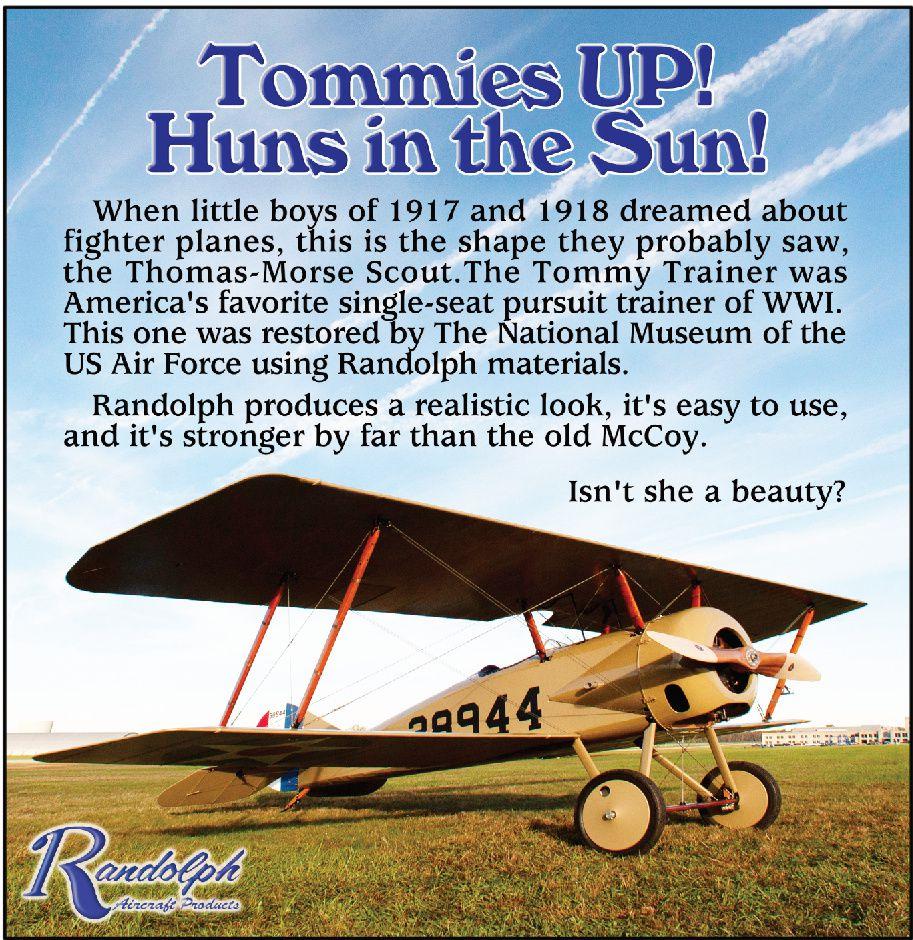 Paul’s son Tom gave Mike his membership card in person when Tom visited South Africa in 1972.
Paul’s son Tom gave Mike his membership card in person when Tom visited South Africa in 1972.
“The Auster, honestly, it flies like what it is, an old, long-wing taildragger. It flies quite nice.”
— Justin Spence
J-2 for sale up in Kimberley,” Justin said. The ad read, “1947 Auster J-2 for sale, damaged in accident,” and Mike sprang into action. There were only 44 J-2s built, and most of them ended up in Australia, so he knew that this Auster just about had to be the Auster. According to Justin, Mike called the seller and said, “Don’t sell it. I’m buying it, and I’ll be there tomorrow.” Mike and then-teenage Anthony hopped in a truck and attached a trailer and, true to his word, bought the airplane and brought it home to the family — for good this time.
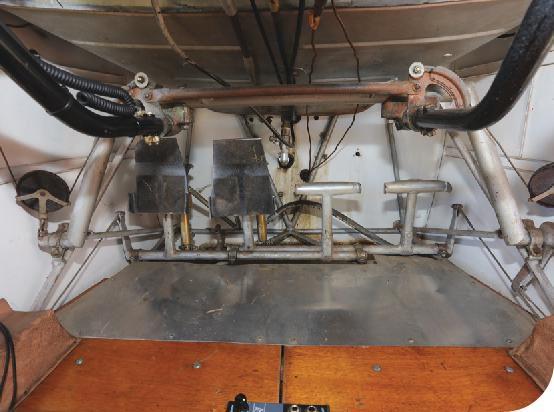
“[Mike] had regretted selling it when he had to, but life is the way it is,” Justin said. “And the airplane had sort of found a way back …. Again, both wings were broken; it was the same sort of story. And my grandfather rebuilt it again with my dad this time.”
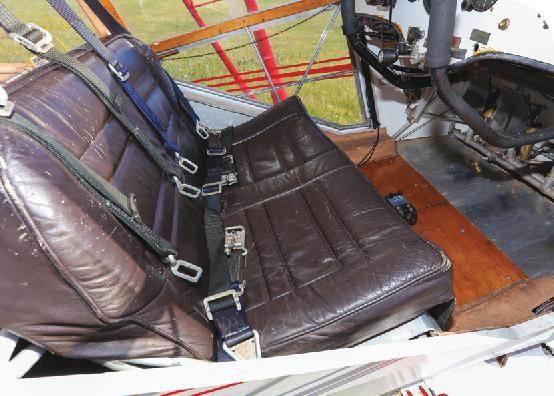
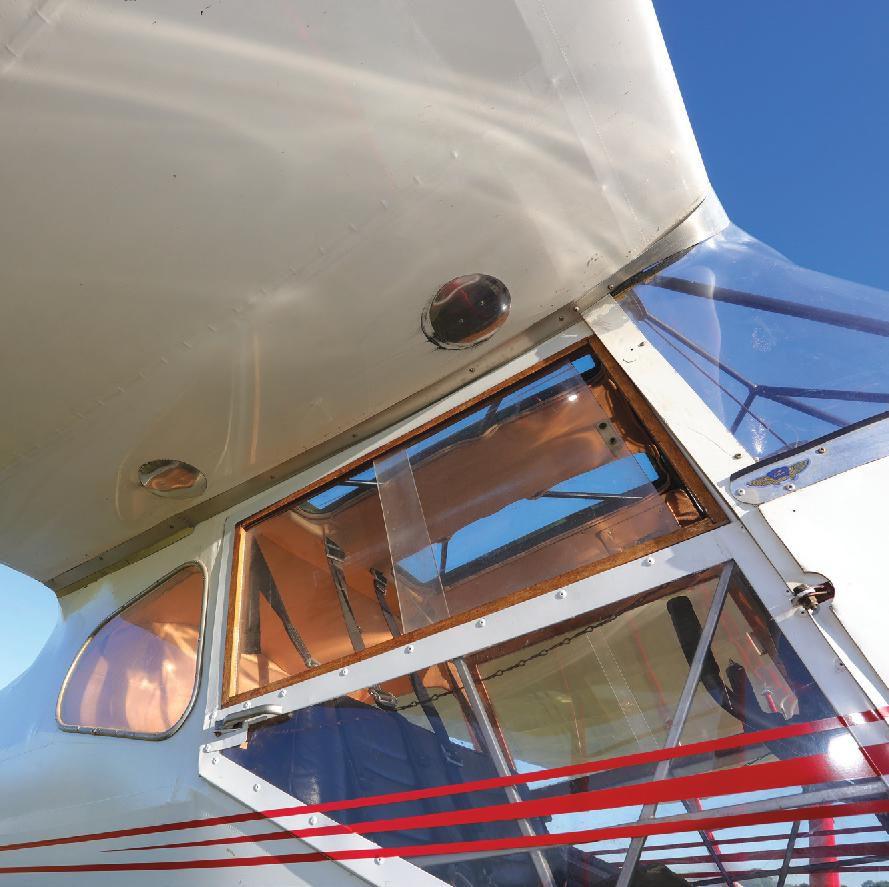
We all know that this airplane, this inanimate collection of cold, bent metal and torn fabric and hardware and gauges and an engine, can’t communicate. It didn’t really know that it had been hurt before in just the same way, it didn’t remember the good man who, with his friend, had rescued it the first time, and, of course, there was no way that it could have somehow put out a call for help.
It was just a bit of happy happenstance, then, that Mike just chanced upon an ad for a broken airplane while he was looking in a magazine shopping for tractors, right? It was just one of those rare cases where the sterile and dispassionate chaos of the universe briefly, randomly resolves into some kind of happy clarity, right? Well, whatever happened, blind luck, coincidence, or something just a bit more
ephemeral or even divine, the Auster, in good and capable hands, came back to life once again, this time as ZS-VMV.
As Anthony grew up, he stayed immersed in aviation, becoming a pilot and a mechanic just like his dad. The family enjoyed flying the Auster all around South Africa, eventually basing it at Krugersdorp, a city toward the north side of South Africa with a rich history in mining. In 1989, Anthony and his wife had a son, Matthew, followed three years later by another son, Justin. As kids, even their nicknames were rooted in aviation.
“I was Nosewheel, because I was getting carried everywhere, and my brother was Tailwheel, because he was just walking, trailing behind,” Justin said. “Every Saturday of my life was spent at Krugersdorp around the airplanes. And then as we grew up, around about the age of 10, 11 years old, we got pretty heavily into model airplanes. And so, Sundays went to flying model airplanes,



Get your EAA® AirVenture® wristbands and credentials mailed to you in advance with our Express Arrival program!
We’re committed to getting you onto the grounds as safely and quickly as possible.
Express Arrival is an exclusive benefit for EAA members and tickets for AirVenture 2023 are on sale now! Purchase your tickets today at EAA.org/TICKETS
CELEBRATING 70 YEARS OF DREAMERS AND DOERS

and obviously the two just went hand in hand.” Justin said that he and his brother both likely had several hundred hours in the Auster before they could even reach the pedals.
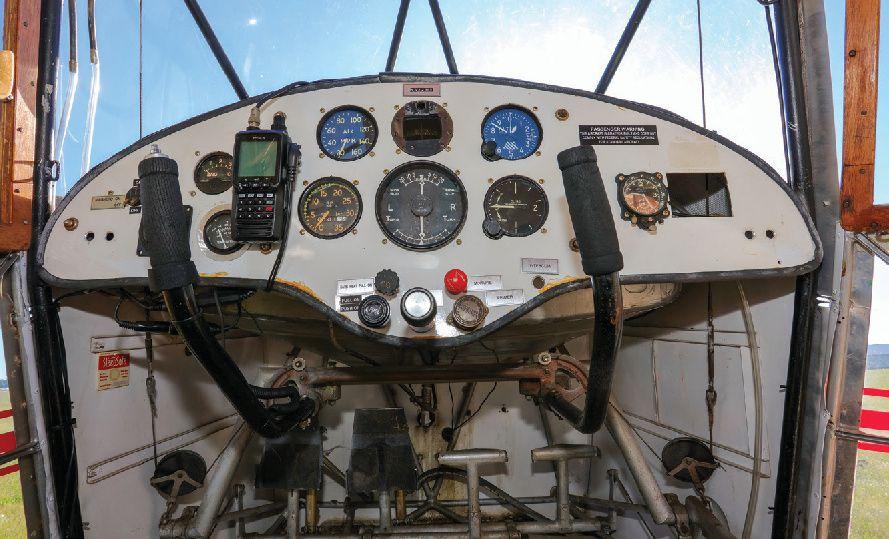

As he grew up, Justin, like his father and grandfather before him, also became a pilot and a mechanic. He and Matt did apprenticeships with Anthony, who was running an aircraft maintenance company at the time. Through it all, the Auster was always there. Then, in 2010, it came time to re-cover the airplane, so the Spence family set to work, stripping the fabric and fussing over the Auster before applying the new covering and paint and getting it back, as they say, in fine fettle.
“On Saturday, March 24, 2012, the Auster flew again,” Justin wrote. “I remember the date exactly because on March 28, I immigrated to the United States, and for the first time in my life, I would be at an airport without the Auster.”
Justin was only 19 at the time. “The opportunity came from the green card lottery,” he said. “And so I took it.” He’d made the trek to Oshkosh with his brother, dad, and grandfather for AirVenture in 2009, and then again in 2011. It’s no surprise that it made a real impression on him.
“Honestly, it was just hope and a dream, and I just didn’t have enough money in my pocket to buy a plane ticket home,” he said. “My dad and brother were committed to more things in South Africa than I was, so it was easier for me just to head out and just go give it a shot. And the rest is history.”
With a near-empty wallet, luckily Justin had arranged for a place to stay with some family friends who just happened to live in Oshkosh.
“I didn’t know how public transport worked, and so I used to walk from the north side of Oshkosh down to Oshkosh airport,” he said. “And then I just started bugging people for a job.” While he was pounding the tarmac looking for employment, he started volunteering at EAA doing sheet metal work with Gary Buettner, a legendary figure in our restoration shop. Gary put in a good word for Justin with Steve Myers of Myers Aviation, and Steve hired him on part time.
“It was three days a week,” Justin said. “I didn’t have anything else to do, so I just showed up for five days a week. And then Steve Myers made the mistake of paying me for five days a week.” Justin did a bit of everything during his four years at Myers, including some big sheet metal jobs as well as some fabric work and painting. Justin also met Tracy Noack, who is well known around EAA headquarters as a fabric wizard. As he put it, he eventually bugged her enough that she befriended him, and Justin became like family to Tracy and her kids, Emily, Hannah, and Hans.
When Justin left South Africa, Anthony had some tough but realistic fatherly advice.
“There’s not going to be any flying, there’s not going to be anything like that,” Justin’s father told him. “And I basically sort of bet him as the ‘don’t tell me what to do’ teenager sort of thing, that I’d buy an airplane in a year, and 364 days later, I actually bought an airplane,” Justin said. It was a
Mike never forgot that first Auster, the one that he and Jerry rescued and resuscitated back in the ’50s. In 1978, after somewhere around 16 years apart, the two crossed paths again.The instrument panel is largely original, including the distinctive, big, and British turn-and-slip indicator front and center.
Pitts Model 12 project that he worked on in Tracy’s hangar. He also worked with Tracy and Emily on the latter’s airplane project, which, unsurprisingly, ended up winning a plaque for Outstanding Aeronca Champ at EAA AirVenture Oshkosh 2016. (See “The Young Fixing the Old,” What Our Members Are Building/Restoring, EAA Sport Aviation, January 2016 for more on the Champ.)
While he was at Myers, Justin had a chance to work on a Hawker Sea Fury that had been damaged in Oshkosh. The owner of the airplane, based in Memphis, Tennessee, was impressed and told Justin of a lot of similar work was available in that area, so Justin once again packed up and moved on. Memphis is home now.
“I started my own company, showed up here once again with not enough money for anything,” he said. “I showed up here with my toolbox and my small Ranger pickup truck and slept on a couch in a hangar for too many months to count. And then a hangar came up available at the airport, and I started paying rent from the hangar and just expanded from there to a point where at one point I had five employees, and we were just growing like crazy from building a SubSonex to working on Pitts and Stearmans and T-6s and just all the vintage stuff.” During this time, Justin and a friend of his bought a Fairchild PT-19 and refurbished it, and then built a flying club around it (see “Spirit in the Sky,” EAA Sport Aviation, July 2019.)
Eventually Justin scaled things back at his company, Ultimate Aircraft Services (named after his father’s old business back in South Africa), to focus on adding ratings. He bought a Twin Comanche and, like everything else in his aviation career, threw himself into it. Six months later, he had everything he needed to
fly commercially and has spent the last 18 months or so flying for a Part 135 operation. “It’s been great because it’s offered me the time and everything to put back into what I truly love, which is the homebuilding and the vintage and the oldschool techniques of doing things,” he said.
In the meantime, Justin’s brother Matt also moved to the United States, followed soon thereafter by their dad, and both are actively working in aviation. But there was another member of the family sitting at home, waiting for a chance to emigrate.
“The Auster had stayed in South Africa for my grandfather to fly,” Justin said. “[But] his health had declined, and he wasn’t flying.” Justin flew home to spend time with his grandparents and, of course, say hello to old 2373.

“It really was like seeing an old friend,” he said. With Mike’s blessing, Justin disassembled the airplane, got it into a container, and shipped it back to Memphis.
“When the airplane arrived here, it sat in pieces for a little while until I got some time to put it together and get it flying again,” he said. “We’ve got some photographs of the first flight with this airplane with myself and my dad, with the photographs getting taken out the back of the PT-19.”
It had been re-covered and repainted and the engine overhauled back in South Africa just before Justin emigrated, so other than putting it back together,
Know who these guys are? Who they became? They were best pals way back then, always together just like Abbott and Costello or even Hope and Crosby Today their names are so powerful that family lawyers have forbidden us from revealing them. Maybe you can tell who they are from their innocent y .
Did they have something important to do with aviation? Not exactly It was more about what aviation had to do with them
Why are they notable? How did they change our lives? Well, the guy on the left (we’ll call him Phil) invented those little bamboo umbrellas they put in fancy drinks Genius! The guy on the right, (let’s call him Dave) a true visionary, came up with the little tabs on zippers It goes to show that an early interest in aviation can send a young man down some wonderfully productive and lucrative roads
So buy your kid an airplane!
he didn’t have to do any work on the airplane. Justin said that getting it registered in the United States actually proved to be pretty straightforward.
“I benefit from having the maintenance licenses and stuff like that,” he said. “So basically, we just had to prove that the serial numbers on the airplane were the ones that matched the logbooks and for the engine and stuff.” With no U.S. type certificate, the airplane falls into the experimental exhibition category.
“The FAA came around and did an airworthiness inspection on it, and I had a pretty good relationship with the guys that had come around. They looked it over, and everything was happy. And I think we flew it the next day.” Once all that was done, the airplane was given its new name — N322MV, in honor of his grandfather, and Justin and his family have been happily flying it ever since.

Justin’s airplane instrument panel is straightforward and largely original, with several round (of course) gauges, dominated front and center by a classic British double-needle turn and slip indicator powered by a venturi. The oil temperature and pressure gauge isn’t original, and neither is

the altimeter that’s calibrated in inches of mercury instead of millibars.
“My grandfather was always into watches, so it’s got a sort of face-mounted, regular wind-up eight-day clock,” he said. “And the rest has just been there forever. It’s got old-school same primer. The same primer that’s on the side of a Mosquito is the primer that’s in the Auster.”
As for how it flies, well, Justin takes a bold stance when comparing it to its U.S. ancestors.
“I’m going to upset a lot of people with this statement,” he said. “It flies better than a Taylorcraft.” Justin credits this to that asymmetrical wing, and the fact that it has sticks versus yokes, which let you have a bit more fun with it.
“The Auster, honestly, it flies like what it is, an old, long-wing taildragger,” he said. “It flies quite nice.” Justin said he enjoys taking 150 and 172 pilots up in it and “… watching people getting used to using their feet again, even just for flying straight and level.”
Given the engine, the original C75/85 that the airplane left the factory with, albeit with slightly upgraded cylinders, speeds are what you’d expect — you can pull it off the runway at 38 mph if you try hard enough. With the current prop, it’ll cruise at 90-100 mph, and with 18 imperial gallons (about 18 U.S.), Justin plans two-and-ahalf hour legs to give a comfortable reserve. That got him to AirVenture Oshkosh 2022 from Memphis in about seven hours with fuel stops.
Justin has basically spent his life developing the skill sets, so he’s well equipped to maintain an airplane that’s currently two-and-a-half times as old as he is. But the Auster really doesn’t ask for much. You might ascribe that to a sense of grateful loyalty that the airplane feels for multiple generations of the Spence family, but it’s probably something best chalked up to good design and engineering, and ongoing care.
“It runs like a top,” Justin said. “Sometimes I’ve got to swing [the prop] a few more times to get it started, but it’s never not started. The absolute worst thing that’s ever happened to me maintenance-wise in this airplane was I lost a magneto one day, and I had to go do some searching around for some…. It’s got Eisemann mags on it, which I know there’s a lot of people that don’t like Eisemann mags, but I will tell you that these magnetos have run forever on this airplane and keep going.” And “keep going” is just what the airplane is destined to do.
The Spence family have been the Auster’s caretakers for more than 50 of its 76 years. Mike, the one who brought it in to the family, died in 2019, just after his 89th birthday, but he did so knowing that the airplane was in
the best possible hands. And now, the little Auster is ready for the next round of Spences.
“The fourth generation is here with my nephew,” Justin wrote. “One day I believe another story like this will be written where my brother or I are the grandfather.”
That seems not only perfectly believable but also inevitable. And when that story is written, it will be a testament to a good and honest airplane and, especially, to a family who has its priorities straight.
For more from the Spence family about their aviation history, you can find both Anthony’s “EAA in South Africa” and Justin’s “The Little Auster” online at Inspire.EAA.org — just search “Auster.” My thanks to both of them for their help with this story, both directly and indirectly. — Hal
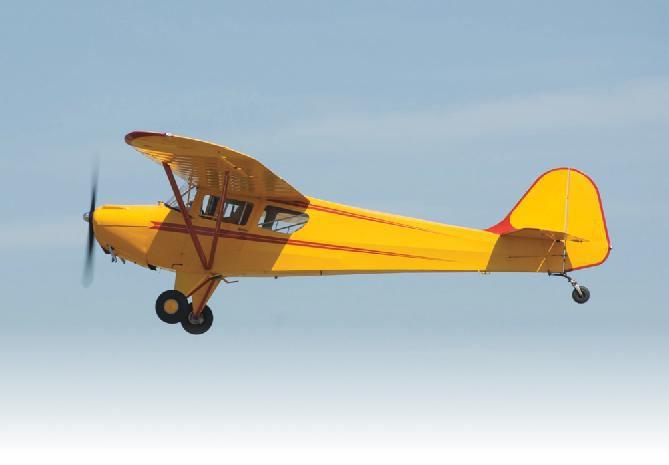
“The fourth generation is here with my nephew. One day I believe another story like this will be written where my brother or I are the grandfather.”
— Justin Spence
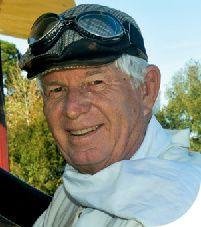
WE BEGIN THIS ISSUE with a discussion about maintenance, repairs, and alterations for the antique airplane. Let’s proceed from the owner’s standpoint and talk briefly about preventive maintenance. Federal Aviation Regulations (FAR) Part 43, Appendix A(c) describes preventive maintenance as that maintenance that can be accomplished by the owner, provided it does not involve complex assembly operations. We will cover just a few; if you’re interested, consult FAR 43.
First, the owner can make minor fabric repairs consisting of bonding a fabric patch to small holes. It does not allow patching large holes or doing any kind of rib lacing. Also included is making sheet metal repairs to secondary structures, such as cowling, fairings, and the like. It does not authorize repairs to the primary structure. The owner can repaint the aircraft, but not balanced control surfaces. The owner can replace tires and tubes, replenish fluid in shock struts and brake cylinders, and replace upholstery. The owner can replace shock absorbers, pack wheel bearings, and lubricate components, as long as there is no disassembly required. The owner can replace seat belts, light bulbs in landing and navigation lights, and replace and service the battery. As far as the engine is concerned, the owner can change oil; inspect oil and fuel screens; replace, clean, and gap spark plugs; and replace hoses in fuel and oil systems (excluding hydraulic systems). Please note that this is only a partial listing.
If the airplane is operated “for hire,” then the work needs to be supervised by an A&P mechanic who needs to make an appropriate entry in the logbooks.
An A&P mechanic can perform and return to service minor repairs, minor alterations, and maintenance, including 100-hour inspections. An A&P mechanic cannot approve major repairs, major alterations and annual inspections. An A&P holding an inspection authorization (A&P-IA) can approve the above; however, the only major alterations that can be approved by the A&P-IA are those listed in FAA Advisory Circular 43-13-2A and some supplemental type certificate (STC) installations. But this major alteration issue is good for another column devoted to this one subject at a future date.
A simple definition of a major repair is a repair to the aircraft structure that returns the airplane to conformity with its approved type certificate (ATC), or in rare cases its Group 2 approval.
Similarly, a major alteration is something done to the structure that moves the airplane outside of its ATC or Group 2 approval.
Let me list just a few Major Repairs, as specified by FAR Part 43, Appendix A(a): Splicing of structural members, such as spar splices, steel tube splices, large repairs to stressed sheet metal components, and the replacement of fabric (original type only). And there are many more.
Now, here is a very brief list of major alterations, as specified by FAR Part 43, Appendix (b): Electrical system installations in nonelectrical airplanes, radio installations, battery installations, and replacing of synthetic fabric on surfaces originally approved for Grade A cotton fabric. Again, there are many more to list. But, some major alterations can be approved by an A&P-IA.
Other major alterations cannot be approved by the A&P-IA. A few of these alterations are engine and/or prop changes, changes in wheels and brakes, changes in tail wheel installations, changes in fuel system (addition or subtraction of fuel tanks), installation of an entire electrical system including battery and charging system, and alteration of wing and/or control surface shape.
So what happens (with the FAA) when a person buys an airplane that had been converted to a crop duster/sprayer and wants to return it to “stock” configuration? That’s always a good one to analyze. The A&P-IA can remove the modifications to the structure and replace components originally used in the airplane—and can return it to service.
However, when all work has been completed, the FAA must do a conformity inspection to determine if the airplane conforms to its original type certificate, and issue a new standard airworthiness certificate. The old airworthiness certificate was in the restricted category, and it is no longer valid. The point here is that the mechanic is modifying an existing structure back to standard, not the opposite.
Thus far, in my career as an aircraft mechanic, I’ve been through six different FAA conformity inspections, the most difficult being on my 1929 Command-Aire because there were no drawings or other type design data. You may be fortunate if there is a type club for your aircraft that may have a large collection of drawings for the purpose of keeping an aircraft airworthy. And that is a most important factor for future dealings with the FAA. We’ll have more on that later.
Factory drawings continue to be a most important item for aging aircraft but may be the most difficult to obtain. Drawings are needed when the owner finds it necessary to replace a primary structural component, such as wings, control surfaces, fuselage, landing gear, etc.
How were drawings originally submitted to the Aeronautics Branch of the U.S. Department of Commerce, or later the Civil Aeronautics Administration (CAA)? The answer lies in Aeronautics Bulletin No. 7-A dated July 1929. (See figure 1.)

Within the CAA’s bulletin, Paragraph 4—PROCEDURE reads: “The drawings, which the manufacturer is required to furnish in duplicate, are checked for conformity.” After the airplane is approved for manufacture, “One set of drawings is impressed with the seal of the Department of Commerce and returned to the manufacturer to be used in the construction of his airplanes. The other set is placed in the department’s files.” It is the location and access to the second set of drawings that is always controversial (these drawings are commonly called “first copy”). Some drawings have been released, either hard copy or microfiche, while some are still in storage. And many drawings were destroyed. Such was the case for the Command-Aire.
Where were (are) the drawings stored? Originally they were stored in Washington, D.C., in the department’s files. As the drawing files grew and more aircraft received the coveted approved type certificate, the drawing files were relocated to the old torpedo factory building at Alexandria, Virginia. As the files continued to grow, the newly formed FAA relocated the drawings to the district office (DO) nearest to where the airplane was manufactured. Some drawings were lost during transfer, and some were destroyed at the DO. But many drawings are still stored at the Federal Records Storage Center in Suitland, Maryland. I have perused boxes and boxes of original blueprint drawings stored there for years! It’s absolutely amazing what is there. But no one knows exactly what is in each of the boxes. I have a brief transcript of what I saw in 1982, but it’s a drop in the bucket of what is actually there. Perhaps this could be another column in the future.
So drawings are a most important item when it comes to repairing a structure or fabricating new. What if you want to make a new wing structure and there are no drawings available? Aha! The wall has been set and it is almost impossible to obtain drawings from the FAA, although it is the “caretaker” of all ATC drawings.
I will say that wood structures are probably the easiest to reproduce from original parts, because aircraft quality wood is still aircraft quality wood and the component can be reverse-engineered. A major deviation will be the type of adhesive used to manufacture the part. The manufacture of metallic parts provides yet other challenges. What type of aluminum is it? Was it heat-treated or not heat-treated, and what type of heat-treatment did it receive? The same is true with steel-tube structures. Was it originally SAE 1020, SAE 1025, or SAE 4130? What type of filler rod was originally used? Was the structure not heat-treated, or if heat-treatment was used, what specifications were followed and what was the final tensile strength of the material?
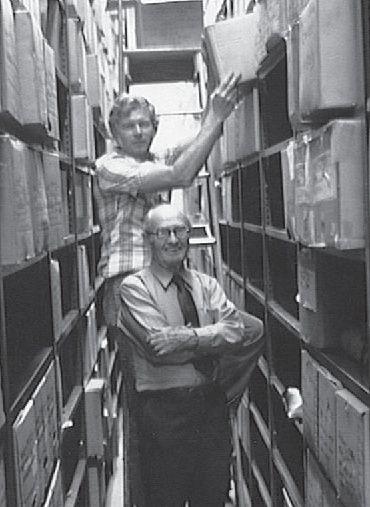
My point here again is that drawings are most valuable when reproducing parts. Without them it can be very difficult. And these needed drawings are sometimes impossible to obtain or have been destroyed. If the drawings are not available and the owner needs to fabricate a primary structural part for his or her own airplane, then my question is, where is the middle ground? And how can we keep this airplane airworthy? FAR Part 21.303(a) allows the owner to reproduce parts for his or her own aircraft, but not to sell an exact duplicate to others. Still, the owner is responsible for overseeing the construction of such parts to make sure they conform to original specifications.
Alterations are often necessary to make an aircraft safe; one doesn’t want to build problems that came with the airplane in 1929 back into a restoration completed today. What are some common alterations that one finds when dealing with older aircraft? The first that jumps out at me is an engine change. Say from an OX-5 or Wright J-5 to a Continental W-670 or Lycoming R-680, as is commonly found in many Travel Air airplanes.
Originally, these conversions were completed with a field approval from the CAA. Try doing a complete engine change without any type of approved data in today’s world. Darned near impossible. To remove a Wright R-600 Challenger engine of 185 hp and install a Wright R-760 engine of 240 hp, I had to do a one-time STC! It involved more than four years of time and much paperwork, and the process rapidly increased the gray hair on my head. But I finally prevailed and have a one-time STC approval for NC997E only. I cannot do another installation, but I can use my original Form 337 as substantiating evidence that the installation might be field approved again. The use of previously approved Form 337s can be another topic for the column at a future date. Perhaps when the waters are a little less muddy. There are many changes occurring within the FAA at this time, and field approvals happen to be one. So we’ll just have to wait and see what happens.
Supplemental type certificates are just what the term indicates, a major alteration of the original type certificate. Obtaining an STC from the FAA takes time, money, and the know-how to get it through the system. When I was working on
I’d like to briefly discuss the certification of Airframe & Powerplant mechanics and why there is a shortage of qualified people When I began instructing in the A&P program at Reedley College in 1967, the local FAA mandated that we teach students how to make a five-tuck woven-cable splice, splice a wood wing spar, and weld a cluster out of steel tubing. Their reasoning was that many modified Stearman agricultural aircraft were located in the valley and that all mechanics should have these skills Eventually these skills became even more outdated and were dropped in the level of importance
Skill levels are determined by the FAA and appear in FAR Part 147. There are now 44 subject areas to which all students for the A&P certificate must be exposed, and there are three levels of exposure. Level 1 means to be lectured, look at pictures, and maybe touch the item Level 2 means to have some knowledge that can be repeated And Level 3 means that an extensive knowledge of the subject must be taught Wood, fabric covering, gas welding, the radial engine, and many other subjects that relate directly to older aircraft are now relegated to the bottom of the knowledge rung, Level 1. Therefore, most entry-level mechanics with little experience do not have the skills necessary to inspect, maintain, and repair older aircraft Owners either have an experienced mechanic/inspector who supervises their work and signs off on such work in logbooks, or they have an experienced person who actually can do the work. These experienced wood, fabric, steeltube welders, and radial-engine folks are becoming harder and
harder to locate. Type clubs have several experienced mechanics and inspectors within their ranks. But there never seems to be enough to go around
To compound the problem of this mechanic shortage, general-aviation A&P mechanics must endure very low wages to stay in the business And fixed-base operators don’t like to hire newly certificated mechanics because they don’t have experience and must be trained. It’s a vicious cycle; it was there when I started teaching in 1967, and it’s still there now. Where are we going to find experienced young mechanics to maintain the fleet of aging airplanes? I’m still looking for that answer! Mechanics who seek careers in the vintage portion of general-aviation type ships are usually influenced by mentors. Mentors are either a friend or an employer, and they offer encouragement to continue in this area of aviation, either through their experiences or someone they know who has had an illustrious career in vintage aircraft
my one-time STC for the Command-Aire, there were FAA folks who did not have a clue about the existence of a Command-Aire! They knew what a McDonnell-Douglas DC-10 was or a Boeing 727. In other words, these engineers primarily were assigned major modifications to very large transport category aircraft. That’s part of the problem! I finally had to hire a designated airworthiness representative (DAR) to help get the STC application off dead-center. All I can say is that it was a nightmare! But I, with the help of my DAR, finally prevailed, and the Command-Aire was certificated in the Standard category (NC) in 1989. It has been flying ever since.
Lastly, I’d like to say a few words about maintenance. I know I am preaching to the choir, but continual maintenance will keep the older airplane in airworthy condition. Many owners are not certificated mechanics, but it is extremely important to be able to diagnose a problem or be able to thoroughly describe what the problem is to get it repaired. As I stated earlier, many new young mechanics don’t have a clue about the older airplanes. I have instructed my son, Rob, who operates a 1929 New Standard D-25 biplane, how to time a magneto and how to check and reset idle mixture or speed—just a couple of the things that can or will go wrong with a radial engine. Now, Rob cannot do any of these maintenance items because he operates the airplane
commercially. But, he can describe a problem and diagnose how to fix it, and if the problem involves a magneto, he knows how to time it to the engine. [Since this column was published in the TARA newsletter in 2002, Rob has earned his Airframe and Powerplant certificate and now has the authority of returning to service maintenance and minor repairs to his aircraft.] It’s kind of like when I ferried his Fairchild PT-26 from Kentucky to California; the tail wheel went flat out on the plains of Nebraska. The young A&P had never seen a tail wheel like this, so I said, “You jack up the tail, I’ll disassemble the wheel, you fix the tube, and I’ll reassemble the wheel and reinstall it.” I did most of the work; it cost about $45 as I recall, but he was happy and I was on my way.
Constant maintenance by a mechanic, coupled with preventive maintenance by the owner, will keep our old airplanes airworthy. Let’s fix them before they break . . . and be safe!
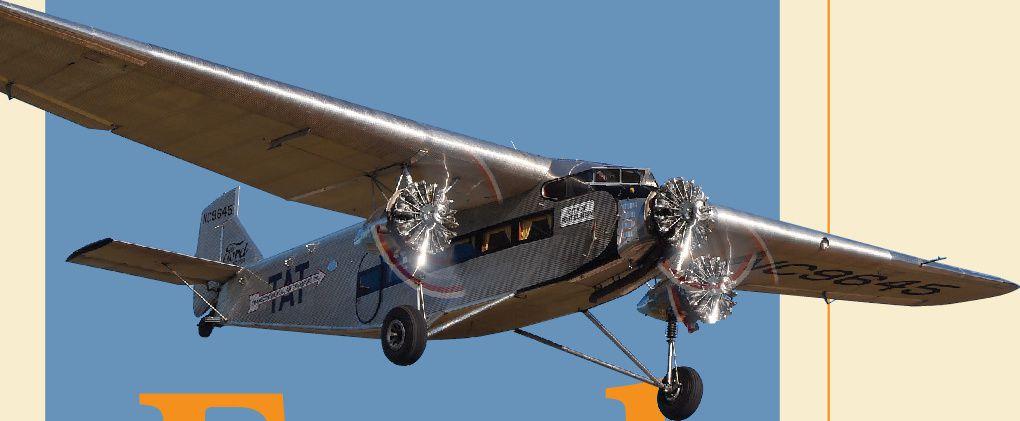
From talking to the experts, or to those in the know, there are two or possibly three antique airplanes still flying with this propeller. Hopefully, the weather will cooperate, and we will be able to get these airplanes in the air for flybys during the air show. Ray Johnson is planning to bring a few of these airplanes to our center stage for Vintage in Review, and a cutaway Continental A40 engine will be on display in the Vintage Hangar. Many thanks to the Alfred and Lois Kelch Aviation Museum in Brodhead, Wisconsin, for the loan of the A40 cutaway engine. I would also like to thank brothers Mark and Bob Stewart for their gigantic role in organizing this event. Please see Mark’s exceptionally well-written and in-depth article on the Continental A40 engine elsewhere in this issue of Vintage Airplane.
If you are wondering what will be happening in the Vintage area during EAA AirVenture 2023 and where you can find information on those events, then wonder no more! Information on Vintage events is published on the Vintage website at EAAvintage.org, on Facebook, in e-blasts, as well as on signage throughout the Vintage area and on TV screens in the VAA Red Barn, Tall Pines Café, and the Vintage Hangar. We also publish a booklet of
events that is included in our pilot arrival packets. If you don’t fly in, you can pick up the events booklet at the Red Barn Hospitality Desk or in the Tall Pines Café. If all else fails, look for signage outside. The plan is to quadruple our outside signage!
And lastly, as EAA celebrates its 70th anniversary, I would like to congratulate and thank everyone at EAA — both past and present — for 70 years of unparalleled excellence and leadership in the field of aviation.
Blue skies!
BOOKS
“To Look Upward: One Flight Instructors Journey” Rob Mixon Amazon
Complete Guide to Aeroncas, Citabrias & Decathlons 3rd Edition is now available after being out of print for over 20 years; The full color Third Edition is edited for errors, adding several photos and pages. https:// bellanca-championclub.com /CompleteGuide.html
COPYRIGHT © 2023 BY THE EAA VINTAGE AIRCRAFT ASSOCIATION. ALL RIGHTS RESERVED
VINTAGE AIRPLANE (USPS 062-750; ISSN 0091-6943) copyright © 2023 by the EAA Vintage Aircraft Association, Inc., is published bimonthly and owned exclusively by the EAA Vintage Aircraft Association, Inc., EAA Editorial Department, 3000 Poberezny Road, Oshkosh, WI, 54902. Periodicals postage is paid at Oshkosh, WI, 54901, and additional mailing offices. U.S. membership rate for the EAA Vintage Aircraft Association, Inc. is $45 per 12-month period for EAA members, and $55 for non-EAA members.
POSTMASTER: Send address changes to EAA MEMBERSHIP SERVICES, P.O. Box 3086, Oshkosh, WI 54903-3086. CPC 40612608
FOREIGN AND APO ADDRESSES: Please allow at least two months for delivery of VINTAGE AIRPLANE to foreign and APO addresses via surface mail.
ADVERTISING: Vintage Aircraft Association does not guarantee or endorse any product offered through the advertising. We invite constructive criticism and welcome any report of inferior merchandise obtained through our advertising so that corrective measures can be taken.
EDITORIAL POLICY: Members are encouraged to submit stories and photographs. Policy opinions expressed in articles are solely those of the authors. Responsibility for accuracy in reporting rests entirely with the contributor. No remuneration is made. Material should be sent to: Editor, VINTAGE AIRPLANE, PO Box 3086, Oshkosh, WI 54903-3086. Phone 920-426-4800
PRESIDENT Susan Dusenbury 1374 Brook Cove Rd. Walnut Cove, NC 27052 336-591-3931 sr6sue@aol.com
VICE PRESIDENT
Dan Knutson 106 Tena Marie Circle Lodi, WI 53555 608-354-6101 lodicub@charter.net
SECRETARY Dan Wood 75 Walton Place Dr. Newnan, GA 30263 678-458-3459 fly170@gmail.com
TREASURER Paul Kyle 1273 Troy Ct. Mason, OH 45040 262-844-3351 paul_e_kyle@hotmail.com
Jerry Brown Greenwood, IN 317-627-9428 lbrown4906@aol.com
George Daubner Oconomowoc, WI 262-560-1949 gdaubner@eaa.org
John Hofmann Columbus, WI 608-239-0903 john@cubclub.org
Ray L. Johnson Marion, IN 765-669-3544 rayjohnson@indy.rr.com
Steve Nesse Albert Lea, MN 507-383-2850 stnes2009@live.com
Earl Nicholas Libertyville, IL 847-504-6945 eman46@gmail.com
Joe Norris Oshkosh, WI 920-279-2855 wacoflyer@gmail.com
Tim Popp Sun City, AZ 269-760-1544 tlpopp@frontier.com
Charlie Waterhouse Dayton, OH 260-385-0851 charles.e.waterhouse@gmail.com
ADVISERS
Jesse Clement jesseclement1@gmail.com
Luke Lachendro avidaviator98@gmail.com
Kathy McGurran kmcgurran@aol.com
Kevin McKenzie kevinamckenzie@yahoo.com
Maxwell Wenglarz waco20900@gmail.com
David Bennett antiquer@inreach.com
Robert C. Brauer photopilot@aol.com
Dave Clark davecpd@att.net
Phil Coulson rcoulson516@cs.com
Ronald C. Fritz itzfray@gmail.com
Robert D. “Bob” Lumley rlumley1@wi.rr.com
Gene Morris genemorris@charter.net
ASSISTANT
Amy Lemke alemke@eaa.org
I think it would be a fair statement to say that we may never fully know or understand the farreaching impact the A40 engine played in the development of aviation in the United States.

